#that or it's the fact that if you fire 6 missiles in a row some of them will hit and stagger eventually :P
Text
Songbirds and Little Gems are stealth weapons.
Mmhm.
#ac6#armored core#hehe#i still think i suck with them but i did beat the boss of this mission with them and on my first try#so i think their gameplay is slowly clicking with me#that or it's the fact that if you fire 6 missiles in a row some of them will hit and stagger eventually :P#anyway this is fun :D
34 notes
·
View notes
Text
The Red Herb’s Top 10 Games of 2020
Hey, fuck 2020. You might notice that many of the “Best Of” lists you read this year and last can’t help but mention how terrible 2020 was. That’s because every day was like hitting a new, splinter riddled branch on our 365 day plummet off a shit-coated tree. The year brought with it a viral pandemic that served as a pressure cooker for the societal and systemic issues boiling beneath the surface of our every day life. And we’re not out of it.
At least one positive holds true of 2020: the games were pretty darn good. One has to wonder, though, if 2020 was the last year of what can be called “normalcy” for the video game industry. Now that the remainder of titles brewed in pre-Covid times are out in the wild, what will the future of gaming look like as studios shift to work-from-home and distribution models migrate to digital as the primary bread winner? What will games look like going forward?
I have no fucking clue. We’ll get there when we get there. But looking back, I’m glad to have had such solid distractions from the stress and strife. If 2020 is any indicator for the industry going forward, then my takeaway is that games will continue to grow in prominence because of their ability to help us cope and, more importantly, stay connected.
Anyway, here’s video games:
10. MARVEL’S AVENGERS

Oh, Marvel’s Avengers. I know you expected to be on more prestigious Top 10 lists than mine. Truthfully, I debated whether or not you should be here. But I had to search my soul (stone) on this one. Really assemble my feelings. Tony Stark my thoughts (?). Here’s the short of it: Marvel’s Avengers has a great story campaign with a surprising amount of emotional weight thanks largely to Kamala Khan’s quest to reassemble the heroes of her youth. Once the final cutscene ends, though, players were expected to take their play box of Marvel heroes, jump online, and duke it out against hordes of villains for the privilege of precious loot and level gains. It would be impossible to get bored because Crystal Dynamics was going to continually Bifrost in new quests, cosmetics, and heroes -- for free!
Except, after fans blasted through the campaign (took me a solid weekend), they found a multiplayer mode filled with repetitive fights against non-descript A.I.M Bots, a handful of dull, un-Marvelous environments (the PNW?! In a video game?! Wowwee!), and a grind for gear that became useless minutes after it was equipped. Oh, and bugs. Tons of bugs. It must be hard for A.I.M. to take earth’s mightiest heroes seriously when they’re falling through the fucking earth every other mission.
So why the Kevin Accolade™? Of all the mistakes and underbaked ideas, Crystal Dynamics got the most important thing right: they made me feel like I was a part of the Avengers. Cutting through the sky as Iron Man; dive bombing, fists-first as the Hulk; firing gadgets at cronies as Black Widow; cracking a row of skulls with Cap’s shield… Avengers is a brawler on super soldier serum.
The combat is crunchy and addictive, and surprisingly deep once you unlock your character’s full suite of skills and buffs. The gear matters little. But choosing a loadout that works for you -- like ensuring enemy takedowns grant you a health orb every time or turning area clearing attacks to focused beams of hurt -- does matter. When it comes to games with disastrous launches, Avengers is the most deserving of a triumphant comeback story because, if you clear the wreckage, I think there’s a solid game here. If I was able to spend hours playing it in its roughshod state, I can see myself digging in for the long-term once it’s polished up and given a healthy dose of content. You know...if Square Enix doesn’t outright abandon it.
9. STREETS OF RAGE 4

Here’s a fact about me: I love beat ‘em ups. From Final Fight to X-Men to The Simpsons, I prioritized my quarters for the beat ‘em up machines (and House of the Dead simply because House of the Dead fuckin’ owns). Unfortunately, Streets of Rage wasn’t in arcades, and I didn’t own a Genesis growing up, so I didn’t get around to the series until Sega re-released as part of a collection. Though my history with the 29 year old brawler is shorter than some, the basics stand out out right away: it’s an awesome side-scrolling brawler filled with zany character designs and high octane boss fights.
SoR4 nails that simple spirit while adding an electric soundtrack, buttery smooth animations, and an art style that looks like a comic book in motion. You can button-mash your way through the game or master your timing to combo stun the shit out of bad guys. Same screen co-op is a requisite for the beat ‘em up genre but I have to call it out nonetheless given that it's next to obsolete these days. The story campaign is, of course, finite but a stream of unlockables and a Boss Rush Mode pad out the package nicely.
I really don’t have to go on and on. I’m on board with any game that captures the arcadey high of classic beat ‘em ups, and Streets of Rage 4 does it with flare.
8. RESIDENT EVIL 3 REMAKE

Resident Evil 2’s remake was my game of the year in 2019. It’s a pitch perfect revision that captures the pulse-pounding fear of the original while beautifully updating its graphics and gameplay for modern audiences. The most striking aspect of RE2’s remake is how it expands and reconfigures the classic game’s environments and set pieces. Capcom managed to recontextualize, and even improve on, the original’s design while staying faithful to its tone and atmosphere.
Resident Evil 3’s remake is less successful in modifying and improving on its source material. If the game feels like it was handled by a different team than RE2R, your gamer hands have good eyes (roll with it). It was developed by a separate internal team (three different teams, in fact), but that’s actually one of many choices mirroring its 1999 forebear. Just like the original, RE3R is a tighter (i.e. shorter) experience that launched less than a year after its predecessor. And just like the original, the game skirts away from survival horror in favor of action horror.
Unlike last year’s remake, however, RE3R paints in broad strokes with the original material much in the same way that 2004’s Dawn of the Dead remake shared a vague resemblance with Romero’s ‘79 classic. Capcom at least nails down what matters: you play as Jill Valentine, beaten and discredited after the Arklay Mountains incident, during her last escape from the zombie besieged Raccoon City. Her exit is complicated by Nemesis, a humanoid missile that relentlessly pursues her from minute two of the game. Her only chance of making it out alive is by teaming up with a gaggle of Umbrella dispatched mercenaries, including an overly handsome fellow named Carlos Oliveras that you control for a spell. But fans struggled to get over what Capcom didn’t remake. Several enemies, boss fights, and a “divergent path” mechanic that had you choose how best to escape the Nemesis in a pinch were omitted from the remake. Even an entire section set in a clock tower was cut. But, let’s be honest, the biggest omission is a secret ending where Barry Burton saves the day using only his beard. For real, YouTube that shit.
If you look at what the remake does instead of what it doesn’t, you’ll find a lightning paced action game highlighted by tense, one-on-one fights against the constantly mutating Nemesis. The tyrant’s grotesque transformations evoke the mind-rending, gut turning creature designs found in John Carpenter's The Thing. It’s sad that Nemesis doesn’t pursue you through the levels as diligently as he did in the original, or as Mr. X had in last year’s remake, but these “arena fights” end up being harrowing and fun, culminating in a memorable final encounter. The remake also treats us to the best incarnation of Jill to date. She’s a cynical badass, exasperated at how Umbrella upended her life, and can take a plunge off of a building yet still muster enough energy to call Nemesis a bitch. RE3R also shines thanks to its snappy combat, including a contextual dodge that feels rewarding to pull off, less bullet-sponge enemies than RE2, and an assortment of weapons to get you through Jill’s Very Bad Night(s). It makes for a necessary, though shorter, companion to last year’s stellar remake.
7. HADES
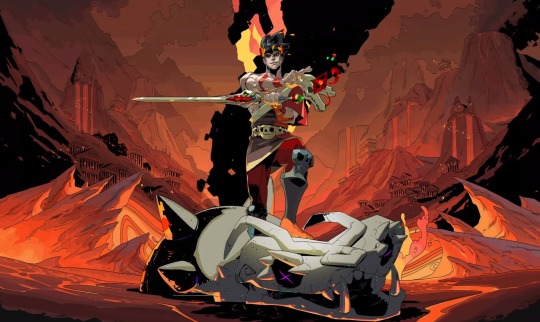
I’m experiencing a new type of shame including a title that I haven’t beaten on my Top 10 list, but I can assure you that I’ve dumped hours into its addictive death loop. It’s probably because of my resistance to looking up any tips, but given the skill-check nature of the difficult boss fights, I’m almost afraid the top shelf advice will amount to “die less, idiot.”
My failings aside, Hades is brilliant. It’s the perfect merger of gameplay and storytelling. You play as Zagreus, son of Hades, and your entire goal is to escape your father’s underworld domain. You pick from a selection of weapons, like a huge broadsword or spear, and attempt your “run,” seeing how far you can make it before an undead denizen cuts you down. It’s familiar roguelike territory, but where Supergiant separates their game from the pack is in the unique feeling of constant progression, even as you fail. With each run, not only is Zagreus earning a currency (gems or keys) that unlock new skills that make the next go a little easier, you’re also consistently treated to new lore. The fallen gods and heroes that line your father’s hall greet you after each death and provide a new insight into their world. The writing is bouncy and hilarious, the voice acting ethereal and alluring, and the character designs could make a lake thirsty.
Supergiant’s stylistic leanings are at their peak here. They’ve managed the impossible feat of making failure feel like advancement. Sure, it totally fucks up other roguelikes for me, but that’s okay. None of those games have Meg.
6. DEMON’S SOULS
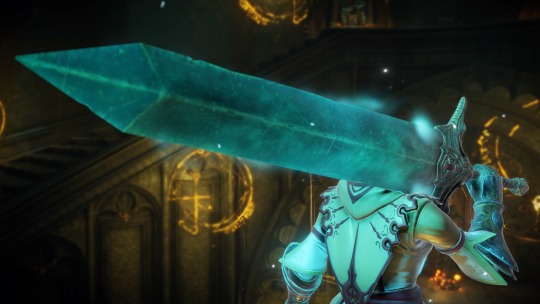
Whereas Capcom takes liberties with their remakes, Bluepoint took the Gus Van Sant approach and made a 1:1 recreation of the 2009 title that launched the “Soulslike” genre. The dividing difference is a 2020 facelift brought to us by way of the PlayStation 5’s next-gen horsepower. There’s been online arguments (surprise) regarding the loss of Fromsoftware’s visual aesthetic in translating the PS3 original in order to achieve a newfound photorealism. It’s true, some beasties lose their surreal weirdness -- a consequence of revisiting designs without the worry of graphical or time constraints -- but the game’s world is still engrossing, morbid, and bleakly gorgeous.
That’s not to say all Bluepoint did was overhaul the graphics and shove this remake out the door. No, their improvements are nuanced, under-the-hood changes that gently push the genre into the next-generation. For one, the loading times are incredible. You could hop between all five archstones in under a minute if you wanted. And this game is a best DualSense controller showcase outside of Astro’s Playroom. You can feel a demonstrable difference between hitting your sword against a wall compared to connecting it with an attacking creature. Likewise, the controller rumbles menacingly as to let you know enemies are stomping across a catwalk above you. “Better rumbles” was not on my wish list of next-gen features, but the tactile feedback goes great lengths to make you feel like you’re there.
Granted, sticking so closely to the original means its pratfalls are also carried over to the next-gen. The trek between bonfire checkpoints is an eternity compared to the game’s successors, and Fromsoftware hadn’t quite mastered the sword ballet of boss fights prevalent in Dark Souls. Instead, a handful of bosses feel more like set pieces where you’re searching for the “trick” to end it versus having to learn attack patterns and counters. Still, it’s easy to see the design blueprint that bore a whole new genre. From having to memorize enemy placements to hunting down the world’s arcane secrets in the hopes of finding a new item that pushes the odds in your favor. Bluepoint’s quality of life improvements only make it kinder (not easier) to plunge into the game, obsess over its idiosyncrasies, and begin to master every inch of it. That is until you roll into New Game+ and the game shoves a Moonlight Greatsword up your ass.
5. YAKUZA: LIKE A DRAGON
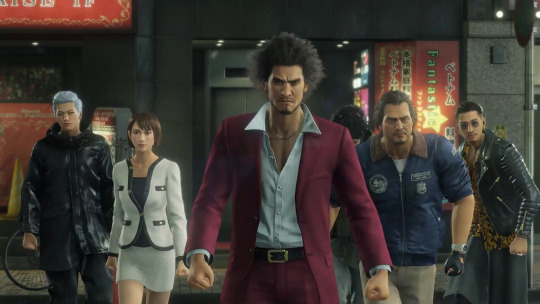
Here’s a fact about me I’m sure you don’t know: I love beat ‘em ups. Streets of Rage 4 had an easy time making it on this list because it can be classified as both a “beat ‘em up” and “good.” Here’s another fact about me: I’m not the biggest fan of JRPGs. I’m told this is not because of any personal preferences I harbor, but rather due to a distinct lack of culture. I’ve made peace with that. At least my uncultured ways are distinctive.
But my disinterest in JRPGs is notable here because it illustrates how very good Like A Dragon is. Transitioning the Yakuza series from a reactive brawler (entrenched in an open-world SIM) to a full-blown turned-based RPG was risky -- especially 8 entries into the mainline series -- but it pays off explosively for Like A Dragon. Not only does the goofiness, melodrama, and kinetic energy translate to an RPG -- it’s improved by it. Beyond a new protagonist -- the instantly likable and infinitely affable Ichiban Kasuga -- we’re finally treated to an ensemble cast that travels with you, interacts with you, and grows with you. Their independent stories weave into Ichi’s wonderfully and end up mattering just as much as his.
The combat doesn’t lose any of its punch now that you’re taking turns. In fact, it feels wilder than ever and still demands situational awareness as your enemies shift around the environment, forcing you to quickly pick which move will do the most damage and turn the fight in your favor. RGG purposefully made Ichi obsessed with Dragon Quest (yes, specifically Dragon Quest) as an excuse to go ham and morph enemies into outlandish fiends that would populate Ichi’s favorite series. It’s a fun meta that never loses its charm.
This is the best first step into a new genre I’ve ever seen an established franchise make and I hope like hell they keep with it for future outings -- and that Ichi returns to keep playing hero. There’s plenty of callbacks and treats for longtime fans, but RGG did a masterful job rolling out the virtual carpet for a whole new generation of Yakuza fanatics.
4. GHOST OF TSUSHIMA

Sucker Punch’s dive into 13th century Japan doesn’t redefine the open-world genre. But like Horizon: Zero Dawn before it, Ghost of Tsushima takes familiar components of the genre and uses them exceptionally well, creating an airtight experience that can’t help but stand out. I can tell Sucker Punch mused on games like Assassin’s Creed and Breath of the Wild, tried to figure out what makes those games tick, and then brought their own spin to those concepts. You can feel it in their obsession to make traversal through the environment as unobtrusive as possible, letting the wind literally guide you to your destinations instead of forcing the player to glue their eyes to a mini-map. You can feel it in how seamless it is to scale a rooftop before silently dropping on a patrol, blade first. You can feel it in the smoothness behind the combat as your sword clashes against the enemy’s. Every discrete part is fine-tuned yet perfectly complements the whole. The game is silk in your hands.
The mainline story can be humdrum, though. It mirrors the beats of a superhero origin story, which isn’t surprising when you account for the three Infamous titles and satellite spinoffs under Sucker Punch’s belt. But Jin Sakai’s personal journey outshines the cookie-cutter plot. His gradual turn from the strict samurai code to a morally ambiguous vigilante lifestyle (to becoming, eventually, a myth) is a fascinating exploration in shifting worldviews. This is bolstered by the well-written side-missions dotting your quest, some of which play out in chains. It’s these diversions about melancholy warriors and villagers adjusting to life under invasion that end up being the essential storytelling within the game. Whatever you do, don’t skip a single one.
Before GoT can overstay its welcome with collectible hunting and stat-tree building, the ride is over. If you find exhaustive open-world titles, well, exhausting, Sucker Punch coded enough of a campaign to sticking the landing and not more. But if you were looking for more, the game’s co-op Legends mode is the surprise encore of the year. It strikes its own tone, with vibrant, trippy designs, and a progression system that embarrasses other AAA titles in the space (I mean Avengers. I’m talking about Avengers).
3. THE LAST OF US PART II
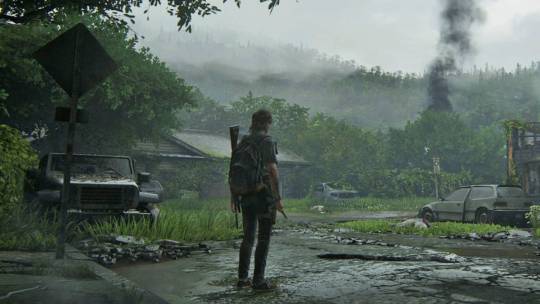
The Last of Us is widely regarded as a masterpiece. It’s a melancholic trek through a realistic post-apocalypse, driven by the budding bond between a world-weary survivor and a would-be teenage savior. The fungal zombies and violent shootouts with scavengers were scary and exciting, but ultimately just window-dressing compared to the level of complicated, and honest, human emotion on display throughout the tale. While a segment of detractors helpfully pointed out that The Last of Us’ story isn’t unique when compared to years of post-apocalyptic books, comics, and movies, that argument seems to forget that a narrative more concerned with the human protagonists’ connections to one another instead of saving the world or feeding into a hero complex is pretty unique for games -- especially a high profile, AAA budgeted game.
Still, fans made heroes out of Joel and Ellie because of their own connection to their journey. And that connection is almost instantly challenged in the opening hours of The Last of Us Part II to heartbreaking effect. But I’m here to tell you that any other sequel would have been dishonest to the legacy of the original game. To be given a hero’s quest as a continuation, an imagined sequel where Joel and Ellie do battle against the viral infection that’s swept the earth, would have been a despicable cash-in. It would have been a mistake to follow-up the original’s careful examination of human nature just to placate an audience that seems to have missed the point Naughty Dog made. The Last of Us Part II hurts. But it has to or else it wouldn’t have been worth making. It’s a slow-burn meditation on the harmful ripples revenge creates, how suffering begets suffering, and how, if we don’t break the cycles of violence we commit to, suffering will come for us.
To drive this point, we’re given two distinct perspectives during the meaty (and somewhat overlong) campaign, split between Ellie Williams, the wronged party seeking revenge, and Abby Anderson, an ex-Firefly whose actions set the sequel into motion. The greatest trick Naughty Dog pulls off isn’t forcing us to play as a character we hate, it’s giving us reasons to emphasize with them. It was gradual, and despite some heavy-handed moments meant to squeeze sympathy out of the player (how many times do I have to see that fuckin’ aquarium?!), I eventually came to love Abby’s side of the story. The obvious irony being that she unwittingly walks the same path Joel did in the original.
My love for the narrative shouldn’t distract from how well designed the world is. Being a King County local, the vision of a ruined Seattle strikes an uncomfortable note -- it was eerie seeing recognizable buildings overgrown with vegetation but otherwise devoid of life. Maybe the heart-wrenching story also distracts from the fact this game is, by definition, survival horror. Exploring toppled buildings in the dark, hearing the animalistic chittering of the infected, defending yourself with limited resources… It manages to be a scarier entry into the genre in 2020 than even RE3R. There’s a particular fight in a fungus covered hospital basement that easily goes down as my Boss Fight of the Year. Human enemies make for clench-worthy encounters, too, with incredibly adept AI that forces you to keep moving around the environment and set traps to avoid getting overwhelmed.
Admittedly, the subject matter -- or more to the point, the grim tone -- was tough to stomach during an actual pandemic which has happily treated us to the worst of human nature. Still, The Last of Us Part II is absolutely worth playing for its balance of mature themes and expertly crafted world, and the way it juxtaposes beauty and awfulness in the same breath.
2. SPIDER-MAN: MILES MORALES
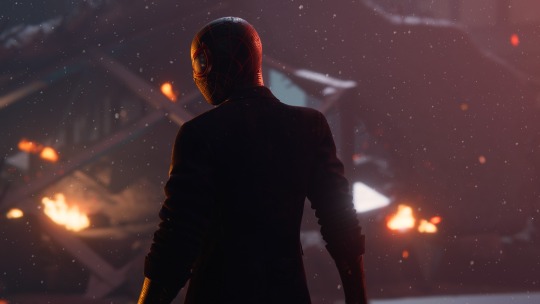
The most impressive thing about Miles Morales is that, despite being a truncated midquel rather than a full-blown sequel, it’s a better game than 2018’s Spider-Man. It’s not because of the instantaneous loading times or the fancy ray-tracing techniques used on the PS5 version of the game. Rather, it’s how it takes the joyride of the original game and hones it into a laser focused experience filled to the brim exclusively with highs. Like Batman: Arkham Asylum going into Arkham City, Miles starts the game off with his mentor’s best abilities and tools. From there, he discovers his own powers, his bioelectric venom strike, which ends up feeling like the missing ingredient from the first game’s combat.
Your open-world playground -- a locale in the Marvel universe called “New York City” -- is exactly the same size as the previous installment, which helps avoid making the game feel “lesser.” But Insomniac wisely consolidated the random crimes Peter faced into a phone app that Miles can check and choose which activity to help out with. Choices like this really trim the fat from the main game and help alleviate “the open-world problem” where the story’s pacing suffers because players are spending hours on end collecting feathers. This is great because Miles’ story is also great. The narrative kicks Peter out pretty early on, focusing on how Miles assumes the role of city protector, primarily focused on his new home in Harlem. Insomniac avoids retreading the same path paved by Into the Spider-Verse by telling a relatable tale where Miles defines his identity as Spider-Man. With a strong cast led by Nadji Jeter as Miles, the game lands an impactful story that weaves its own new additions to Miles’ mythos (light spoiler: I loved their take on The Prowler).
Miles Morales was pure virtualized joy from start to finish. A requirement of the platinum trophy is to replay the entirety of the game on New Game+. I didn’t hesitate to restart my adventure the minute the credits were over. Everything I loved about 2018’s Spider-Man is here: the swinging, the fighting, the gadgets, the bevy of costumes. But it gave me a new element I adore and can’t see Insomniac’s franchise proceeding without: being Miles Morales.
1. FINAL FANTASY VII REMAKE
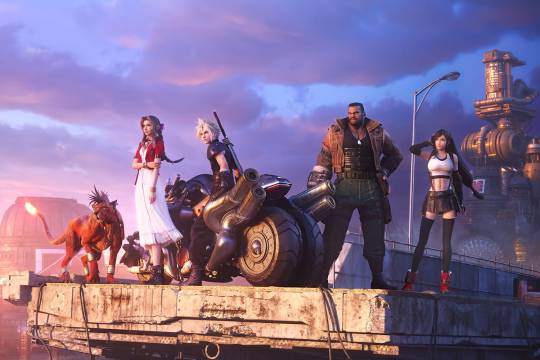
I love subversive media, I do. And Square Enix’s “remake” of one the most beloved video games ever made subverts expectations by openly acknowledging that, yes, the original story you love exists and is consistently referenced in this game. But this is not that story. This is something..else. Because the truth is, SE could never have recreated FFVII and delivered a title that matched the Sacred Game fans created in their heads. That impossible standard is like an imagined deity, given power by feeding on raw nostalgia reinforced by years of word-of-mouth and appearances on Top 100 lists. I’m not saying FFVII is a bad game or that fans give it too much credit. Not at all. There’s a reason it’s so influential -- it’s good! But memory works in a funny way over time. We have a tendency to codify our perception of a thing over the reality of it. The connection we make to certain media, especially when introduced at a young age as FFVII had been to a whole generation of fans so long ago, creates a legend in our heads. Unfortunately, it’s a legend no developer could achieve when tasked with remaking it.
So Square...didn’t. Final Fantasy VII Remake has the same characters, setting, and plot beats as the first third of the original game but it’s not the same game, nor is it a remake of it in the traditional sense. It’s something new. And I fucking love that about it.
Everything is reconfigured, including the combat. After years of trying to merge RPG mechanics with more approachable (and marketable) real-time action (see FFXV and the Kingdom Hearts games for examples), Square Enix finally landed on the perfect balance. You fully control Cloud on the battlefield, from swinging your impossibly huge buster sword to dodging attacks. The ATB gauge (no one knows what the acronym stands for -- that information has been lost to time) gradually fills up, letting unleash powerful moves. But best of all, you fight in a party, and you can switch who to control on the fly.
That may not sound revolutionary, let alone for a Final Fantasy, but each character has a completely unique feel and suite of moves. At times, it feels like playing a Devil May Cry game where you can switch between Dante, Vergil, and Nero on the fly (that’s a free idea, Capcom. Hire me, you cowards). You can soften up an enemy with Cloud’s buster to increase their stagger meter, switch to Barret for a quick gatling barrage, and finally switch to Tifa to crush them with her Omnistrike. You can accomplish this in real-time or slow down the action to plan this out. It’s a great mix of tactics and action that prevents the game from feeling like a mindless hack n’ slash.
What really, really works here is the character work. Each lead walks in tropes first, but the longer you spend with the members of your party, the more their motivations and fears are laid out. You end up having touching interactions with just about the whole main cast. There’s a small segment, after Cloud saves Aerith from invading Shinra guards, that the two make an escape via rooftop.They make light conversation -- small talk really -- but it’s exchanges like this that feel genuine, perfectly framing their characters (stoic versus heartfelt), and grounding an otherwise larger-than-life adventure.
Many bemoaned the fact that FFVIIR only revisits a small portion of the original game, but I think it was a brilliant choice -- to massively expand on areas we only got to see a little of in the original. I honestly didn’t want to leave Midgar. It’s a world rife with conflict and corporate oppression, sure, but Midgar is beautifully realized, from the slums below the plates, populated with normal people trying to make the best of life, to the crime controlled Wall Market, adorned with gaudy lights and echoing honky tonk tunes. It very well may be years before FFVII’s remake saga comes to a close, but if each entry is paved with as much love and consideration and, yes, storytelling subversion as this introductory chapter… It’ll be worth the wait.
8 notes
·
View notes
Text
One headcanon for every year I’ve loved him PART 2: Arrow 🖤
1. Arrow loves barbecuing. He even built himself a great big fire pit out of stones, outdoors near the base of Vampire Mountain. At least once a month he goes out there, cooks a bunch of meat and invites his friends.
2. The more he thinks about it, the more he thinks the vampire concept of “mating” is icky. He’s glad he had a proper wedding. All his friends came. Mika, Paris, Vanez, Arra, and Vancha. Mika was Best Man. Paris gave a speech and everyone cried.
3. He has a huge comfy leather couch in his cell. He found it in a town about 1000km away from the mountain and decided he needed it. He immediately sent out a distress call to Mika and Vanez and they flitted to his aid in a panic only to realize he just needed help getting the thing back to Vampire Mountain. The trip home took a whole month. But it was worth it.
4. Nobody in the entire universe can hug like Arrow. Nobody. An Arrow hug is like being tucked into a heated blanket on a cold winter day. Just perfect. He also gives a great back rub. And have I ever told you he has the sweetest smile? Because he does.
5. Arrow never cared about achieving a throne originally. He likes it now that he has it, of course. But he never forgets Sarah’s murder was the catalyst that got him here. He’d run his throne through a woodchipper and resign if that would bring her back.
6. His strongest personality trait is his instinct to protect those he loves. With Sarah gone, that leaves Mika and Paris. He knows they don’t need it but he just can’t help himself. Watching Paris slowly age is incredibly difficult because there’s nothing that can be done about it.
7. He has the organization and time management skills of a rock. He didn’t realize how much scheduling was involved with being a Prince until it was too late to turn back. Luckily Mika’s very good at that sort of thing (one of the few differences between them) and he helps Arrow keep it all together.
8. Contrary to popular belief, he really does have a last name. It’s a very plain, ordinary name and just doesn’t care for it. He likes being known simply as “Arrow”.
9. For such a powerful man, he is also the gentlest soul in Vampire Mountain. His hands are capable of snapping a femur in two, but he knows his strength and never uses more force than he needs to. On a similar note, he can shout loudly enough to be heard throughout the entire mountain but if one of his friends is truly upset, his voice takes on a tone so soft and soothing it could lull a mad grizzly to sleep, and he gently talks to them until they feel better.
10. Arrow is a classic “right brain” thinker. His emotional intelligence is off the charts. He’s hyper aware of how his own feelings, but even more so of those around him. He’s highly intuitive and more creative than he gives himself credit for. (Hello, who had the idea to save Darren by placing him above the law?) His heart tends to live in the driver’s seat while his brain sits in the back waving its arms out the window.
11. He feels everything very intensely. One minute he can be in a great mood and the next he can be in a downward spiral. He can’t mask his emotions like Mika can. Most of the time he manages to stay fairly upbeat. But PTSD is a bitch and some days are better than others. On the worst nights, Mika lays on the couch in Arrow’s cell so he can quietly keep him company and distract him if need be. Mika claims to be “bad at feelings” yet always knows exactly what to do or say.
12. He loves having Darren around. It feels like having a baby brother. The first time Darren and Arrow pranked Mika (fake spiders on his throne), Mika was extremely offended but mostly because for the first time in history, Arrow pulled a prank with someone besides him. But they talked it out and Arrow promised to be more faithful in future.
13. 50 years after losing Sarah, he ALMOST initiated a conversation with a vampiress he thought was pretty. It was during the Festival of the Undead and it took Mika three hours to convince him to go for it. Mika watched Arrow walk halfway across the crowded room towards her only to turn around and walk back with tears in his eyes, shaking his head sadly. He just couldn’t do it. Mika never brought it up again.
14. He can nap anywhere, at any time. No questions asked. It’s a superpower.
15. It took a long time for Arrow to come to terms with Mika and Kurda’s relationship. Not because they were both men - in fact, that didn’t occur to him until several days after he found out. It was the whole Kurda-Vampaneze aspect that had him on edge. The first time Mika kissed Kurda in front of a large crowd, it was the opening night of vampire council. The Princes had just concluded their speech and Mika gave Kurda a quick kiss on the cheek. Some asshole in the front row yelled an extremely nasty slur. Before anyone else could react, Arrow launched himself out of his throne like a heat-seeking missile, roughly slammed the guy to the ground and roared furiously into his face for about five minutes. When he turned back around, the entire hall had gone awkwardly silent. The only sound was Mika who was doubled over, just laughing his ass off while Kurda stood next to him looking completely mortified. Both of them were prepared for rude comment or two once they took their relationship public. And honestly they didn’t give a fuck (because really, Mika could have them executed if he felt so inclined). But as you know by now, Arrow is a protector and Mika is his Person. And nobody talks shit about his Person.

20 notes
·
View notes
Text
(i guess you could call this) A review on Infamous: Second Son
SInce this is my literal first post on this blog, I guess I should start by talking about the first game I really wanted back when the PS4 came out. Although i didn’t know this at the time, Infamous: Second Son is the latest sequel in the Infamous series, a series i know virtually nothing about. I haven’t actually finished playing it myself, but I currently am at least 75% done with the game.
The base plot, to put it simply, is this; In this world, there are people born with special powers, called Conduits. They could be anyone, and of course some of them start causing havoc, using their powers for crime and unintentionally demonizing the rest of the Conduits to the rest of the world. This starts the persecution of Conduits, now dubbed “Bio-Terrorists”, which eventually leads to this game and it’s story which I’ll touch on in a few.
The Game-play
When you start the game, your main method of attack is pressing X/square until your enemy falls over, or shooting them with small smoke blasts. You have the option to shoot a smoke missile that does splash damage, but unless you put some upgrades in, you wont be using it right away. You don’t use smoke like a regular power, instead you need to absorb some from a smoking car, or a fire to use as fuel for certain abilities, like shooting missiles or just shooting regularly. The regular melee attack doesn’t expend any energy, which you can always see in a bar on the bottom left.
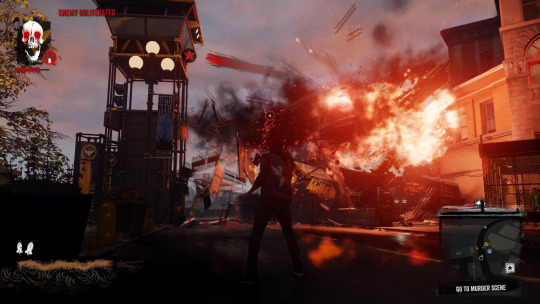
You can press B/Circle to Smoke Dash, though when you gain other powers this will mostly be used more for travelling the game world. It doesn't expend any energy, so feel free to use it as much as you want because you’ll need it to dodge the many many bullets that’ll be sent your way.
In the top right, you’ll see a symbol- that’s your Karma Strike Meter. The Karma Strike is pretty much an ultimate move, that when used properly can end most fights. But, its also my first gripe of the game. See, a big part of the game is a sort of reputation meter, where you can either play the good guy and fight those oppressing the Conduits the morally correct way, or you can do the same while also abusing your power and using your allies as soldiers for your mission. In my first playthrough which I haven’t completed, I decided to be the good guy, which made getting the Karma Strike harder in my opinion. To fill the meter, you need to subdue 6 enemies in a row, or subdue enemies while also doing something good that would fill your good guy meter. For some reason i just can’t ever find enemies to subdue, or enemies that are off to the side make it difficult to subdue others. A lot of stuff can happen in a fight, and that makes it kind of annoying when i know the best way to come out on top is to make 6 enemies subdue-able before i can wipe out the rest.
But, a plus for this reputation meter and the Karma Strike is that it’s consistent. I’ve noticed that the further i get into the game, the more civilians cheer Delsin on when they realize he’s fighting for the better. Plus, you get different Karma Strikes if you have more good karma than bad. But, again, you get more combat options if you have more bad karma than good. Which makes sense, since the good karma upgrades help Delsin’s stats with healing and absorbing smoke and subduing enemies.
The enemies don’t get too many introductions. They all have concrete powers given to them by the main villain of the game, and the more you play the stronger the enemies get. It starts with grunts that just have guns and make shields out of concrete, nothing too difficult though they can get tricky in high numbers. Then, in a mission where you climb to the top of the Space Needle, you fight a miniboss that then becomes a regular enemy. This enemy is especially annoying to me, because until you get the neon power that makes you move faster, they are extremely difficult to hit. They’re like Special Ops, with concrete chunks floating around them. They can trap you in concrete (which can be escaped by smoke dashing) and do some good damage. But ii’s not the concrete that makes it difficult to hit them- It’s the fact that they just run. If you get close enough, they will run and do their own version of a smoke dash to get away from you. And until you unlock neon, that makes them the most annoying enemy so far.
The next enemy is another boss that becomes a regular enemy, just way later. These guys sit in concrete tornadoes, shooting stones at you from a distance, and luckily they aren’t too hard to beat. Just use neon and shoot them from a distance and they’ll fall pretty soon. The next and latest one for me is an extremely aggressive concrete covered enemy that came in a group of three or four(i dont really remember how many). They move way too fast to be able to fight them with the video power, which I’ll touch on in a minute. I haven’t figured out their weakness yet, but i can tell you it isn’t melee because they will steam roll you if you try to get near them.
The Three Powers
In total, you get three powers to upgrade and use, each giving you different play styles and making you use different tactics. I’ll admit, I liked that you can’t switch between them like style switching in Devil May Cry. Instead, you need to find a source of smoke, a neon sign, or a satellite dish for each power. If you’re running low on one, you’ll have no choice but to switch to another and change the game plan.
Smoke
The power you start the game with and my personal favorite is Smoke. The kit you get with smoke just seemed best for combat, and its easy and simple to travel around with. It’s the most abundant source to absorb in a fight because there’s usually a lot of exploding cars or ammo boxes you can absorb to fill that meter. The smoke Karma Strike is ok, but I absolutely love how it looks. Delsin sends himself flying straight into the air, and falls back down like a mortar, destroying everything in the vicinity. Plus, smoke just fits Delsin’s design in my opinion. He gets the next two powers from other people, so they obviously seem out of place for him to have (even though he also got smoke from someone else too but thats not the point it still suits him very well).
Neon
Neon is the second power you get, and it’s the second best in my opinion. It’s not as easy to subdue enemies with it as smoke is, but its still fun to use regardless. I think the lasers you shoot do more damage than the smoke blasts, and neon lets you run at what the game calls “Light Speed”, which is just kinda faster than usual. You can run straight up walls, and you can suspend enemies in these neon bubbles to attack them mid air. The Karma Strike can hit more enemies than smoke does, and you get to put on a pretty neat light show.
Video
Video is my least favorite, so much so that I kind of avoid using this power because its just so slow and when all the enemies are constantly focused on you and shooting at you at all times, being slow is not what you need. The melee is brought down to two strong hits with a bit more range, but they take way too long to finish for it to even be worth it. The heavy attack is pretty much a couple swords that i think are better against choppers? I haven’t tested it much. You get wings but you can only dash forward and up walls for a bit before having to stop. You can shoot automatic, which is kinda useful. But there isn’t much to write home about with this power. Even the Karma strike is hard to get, since this power gives me no real ways to subdue enemies, just hope they surrender and that doesn’t happen often enough to be able to fill the meter. It’s sluggish, it doesn’t offer anything new, and it’s just not for me.
One more thing about the combat; there aren’t many melee options besides mashing square and a ground pound. You can’t do any aerial combos which was disappointing to me because I thought that would’ve been amazing for juggles and just adding more ways to fight. Unfortunately, it kind of feels like you’re very limited in your options for combat.
Other than the combat, I think the game looks amazing, even for something thats 6 years old now. I like the Karma Strikes so much less because they help me in fights and more because they just look super cool and make me wanna look at them again. A lot of games don’t look the best on current gen consoles and even on PC, but this is definitely not one of them. My only gripe with the looks is the how much saturation but this can even be fixed in the settings so it barely counts.
When i first watched gameplay of this game, I had never wanted to be a super hero more in a long time. It was so much fun to watch, and even though it’s not as much fun to play through now, its still pretty good. I know I should touch on the story, but I haven’t finished the game, so I’ll probably do a post about it when i do. But i love the characters, and i love how they interact with each other, and I love how they interact with Delsin. I love watching those dumb brotherly arguments with Delsin’s brother. This game is a 7.5/10 for me.
3 notes
·
View notes
Text
Part 70 Alignment May Vary: Escape from Hell
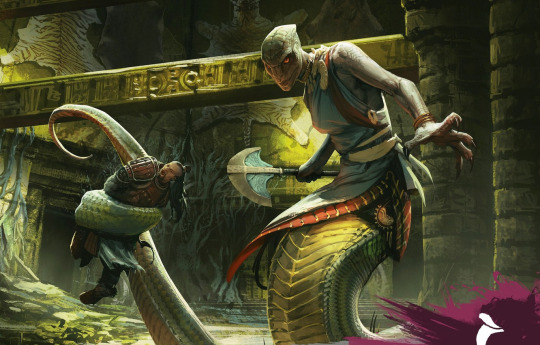
Situation: As the players destroy the chains around the demon train’s heart, they are forced through a passage that appears in the heart chamber, rushed up to the “brain” of the train, the front car engine room, where an old conductor with pits for eyes (and four eyes that may remind one of Verrick’s four eyes), tells them of their success in freeing him and his desire to help them murder devils. He also explains that Arbeyach has been left behind in a discarded train car, still living in the world that Arbeyach created for himself, but now unable to flee it.
Alyss tells the train their next destination: the tower of Mammon and the conductor smiles in anticipation. She uses her phone device to signal to the rebels where they are and their situation, then lowers herself to the ground to try and heal her hurts. Aldric returns her bike to her in a cool roleplaying moment and realizes that she is developing feelings for Carrick, which grows his enmity towards the Paladin.
The players also heal up: the soul stuff that Ratticus gave them heals their hurts completely and also cures the curse that was left upon them by Arbeyach.
Then, rushing across the desert towards the city and Mammon��s tower, the players have one more obstacle to face: they are waylaid by Hecate in her gunship as she tries to blow apart the demon train.
The demon train fight I’ve set up to be an unusual one: the players are pulled inside the train’s “skin” and actually fight AS the train against the gunship, combining their hitpoints and using the following rules:
Their life force combined makes up their hitpoints. AC is 10. Each turn player can choose either defense, maneuver, or attack (only attack can be multiple players). Hecate fires her ship’s weapons at the beginning of the turn. The player maneuvering through the canyons gets to dodge Hecate, adding to their base AC of 10 by a d20+Dexterity or Wisdom roll. The player on defense can subtract damage by a D20 roll + either constitution or charisma. If no one is on defense, this doesn’t happen. Hecate has the following attacks, and DM either chooses or rolls randomly to determine effect each round:
Missiles: 5 missiles at 6 (1d4+4) each. Instant success.
Dual Lasers: fire twice +13 to hit for 27 (5d10) fire damage
Bombs: Player on maneuver must make a dexterity DC 20 save or else take 39 (6d12) concusive damage, halved on a save. Failure means players roll at disadvantage for all attacks.
Power siphon: a harpoon that steals life. +15 to hit. If it hits, steals 26 (4d12) life, no subtraction.
Then players get to attack. Each player in the attack area can use their normal attacks, using spell slots and all of that as normal, but everything is amplified as the train mimics the attack with its own demonic version (so an attack with Imoaza’s scythe may manifest as clawed hands erupting from the side of the train and tearing into the gunship), adding two more damage dice, but no damage modifiers.
Hecate has 212 hitpoints and AC 19. Her saves are +7. She can’t be affected by conditions. She is immune to poison damage. If there are more than three players, she gets an extra attack for each weapon for every three players.
After a drawn out but dynamic fight where Hecate’s rage builds more and more and her mother, Imoaza, continues to taunt her more and more viciously, Hecate’s ship finally blows an engine and she crashes in the desert.
The players are told to cure up, get a short rest and they’ll be at the vault soon. Mammon interrupts their journey with another psychic visit to his throne room, but the players completely ignore him while he tries to offer deals and a chance to join his side. Like I pointed out before, he’s really grasping at straws here, and they know it. Carrick finally loses his anger, telling Mammon that he’s the lamest devil they’ve come across, and that the players give zero shits about him. Mammon takes the revelation calmly and informs them that they are ants to him, ants he was debating whether to crush or not. But now he’s made his decision. The psychic connection is cut and the players arrive at Mammon’s tower in a fairly spectacular way: the demon train crashes into the side of it, ripping it open, and deposits them inside, as close to the vaults as it can. Then it races off to fight a new, horrible threat, while the Hells Rebels arrive and Puck flies down from the sky to join them in their race to the vault of the crystals.
The Conductor let out a gleeful laugh, the sound odd coming from his weathered and cracked lips and completely out of place with the rest of his austere appearance. “When a demon dies in battle, our souls return to the Abyss! My greatest foe comes. Today I go out in a blaze of glory! Today is the day I go home!”
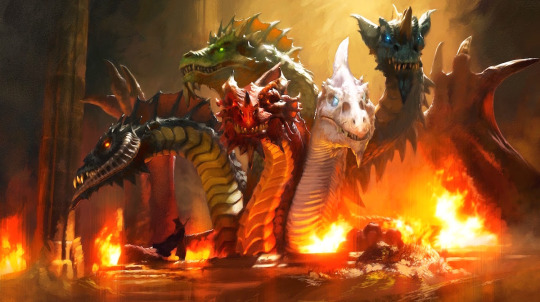
I’m going to take a break from my structure here to chat for a moment about the difficulty of setting challenge in Dungeons and Dragons, because it is highlighted by the next scene.
I know Xanathar’s guide and the DM’s guide both have different methods for setting and figuring out good difficulty for fights, but you really can’t know how something will go in Dungeons and Dragons until you are playing it. I have three players at level 12. Xanathar’s guide suggests CR 5 monsters will be a decent match for them. I want this vault to be guarded by Abishai tasked with ensuring that those who enter the vaults are worthy, so I pick two black Abishai and a White Abishai (CR 7s and 6, respectively) and run a fight against them as the beasts drop down from among rows of statues of similar looking monsters. It’s a cool set up, the Black Abishai causing the vaults to become shrouded in shadow which then gives the Abishai advantage on their attacks.
But in three rounds, the fight is over: the players wipe the floor with them!
I was ready in case this happened, and have a Green Abishai standing by. He is a CR 15, and he comes into the arena with his fear effect blasting across the room indiscriminately, terrifying not only the players but the surviving White Abishai. This fight is a little more dynamic and long lasting, as Carrick and Imoaza flee in fear and the Abishai takes over Aldric’s mind, commanding him to turn on his fellows. The fight could have gone either way, but a mixture of poor die rolls from the Abishai and Aldric mean Carrick and Imoaza get a moment to break him free from his mind control and turn the tide on the Abishai.
Side note: there is a fun moment where the Abishai leaves a suggestion implanted in Aldric and Imoaza’s mind to flee from him and go stand in a corner, a suggestion that carries on after the Abishai is dead, and leaves Puck and Alyss and Carrick arguing with them to get moving. It’s also where we develop something deeper between Carrick and Imoaza: Carrick uses the bond they established on The Arc to take her hand and break her from the spell’s hold with soft words. Imoaza, not used to feeling anything and with her emotional wall weakened by the suggestion spell, feels a twinge of something for Carrick. It’s upsetting for her and strange, but maybe a little exciting too. Alyss catches the moment and believes that Carrick and Imoaza are already a “thing” setting us up for all sorts of romantic comedy action later... if we want to go there.
After all of this, the players rush back to the hole caused by the Demon Train, Alyss having stored a ton of crystals in a bag of holding, and leap out of the hole onto The Arc, which swoops down to catch them. The monster the train was fighting (in fact, died fighting, its soul returned to the Abyss) was none other than Tiamet, Queen of the Dragons.
A ridiculously tough beast, I know the players can’t defeat her in a fair fight. I use her toned down stats from the Rise of Tiamet final fight, but even then this is a beast capable of one-shoting an entire party with a single breath attack. And yet Aldric also hits like a beast, able to take off over 40 hitpoints each turn he attacks something. So I have to do a lot of tweaking as the fight progresses in order to achieve what I want this scene to achieve: a crazy final fight as the party flees from Hell.
Captain Krisp ran around the deck of The Arc, shouting orders. His generals and confidants: Ikbaldi the Barbarian, Star the Tiefling, Tinia the Cleric, Otto the Warlock, Jacobs his First Mate, and Geth the Rogue, all leaped to their battle stations, manning guns and turrets and swiveling them all to point at the rear of the ship as Tiamet crashed into them, her claws and talons wrapping around The Arc and hugging it close to her like a cat about to tear into a trapped mouse. Her five heads darted and dove down at the ship, tearing metal and wood apart, dodging bullets (or seeming to ignore them) as the gunners launched assault after assault upon her, raining down a barrage that would have destroyed a fortress. Aldric, Imoaza, and Carrick stood their ground on deck, Aldric laughing as gleefully as ever the Demon Train had at the prospect of facing such a mighty foe. He ran forward and leaped towards the nearest head, even as it swung around to regard him with fire in its eyes.
I recently did a podcast where I talked about setting difficulty for encounters in DnD 5e. In it, I come to the conclusion that one of the best ways to go about creating good encounters is to let the game world and your plot tell you what needs to be where and to worry about the challenge afterwards. Basically, don’t build with numbers: build with story.
In this case, I know I want Tiamet to be the final fight and I want it to be tough, really more of a feel of surviving a siege than a fist fight with a god where they are going to knock her out. Tiamet is (and rightfully so) way above their pay grade. But I also don’t want the fight to be impossible or a straight party kill. That’s why I have Krisp’s team launching barrages of attacks at her, and also why Puck steps in to use some pretty incredible high level magic to shield and block the worst of Tiamet’s attacks (we don’t yet know the limits of Puck’s powers, but the effort does seem to wear him down).
I also don’t want this to be a fight without consequences, so I let the situation and character choice determine where the danger is. For instance, I let the players roll damage for all the gun barrages being launched each turn. I don’t use all of Tiamet’s legendary breath attacks. And when she does unleash her attacks, I make one of them poison (which Imoaza is immune to). Even when she finally unleashes her signature fire breath, rather than make it about pure numbers, where Tiamet’s attacks are left at their full power, I use Puck to reduce damage to a more reasonable place for the player level. I also really focus my attacks on Aldric, who is insistent on taking on Tiamet directly, which to me is letting the player character steer this fight. Aldric is playing it like a crazed bad ass, which means he’s drawing the focus of the attacks. After lasting two orounds in close quarters with Tiamet, he does fall unconscious, and here is where Krisp finally rushes forward with a rocket launcher, lobs a missile into Tiamet’s mouth, and calls to everyone to get below deck, that he’s got a final plan.
There is one last challenge I place here. In order to let Carrick grab Aldric and flee, Imoaza places herself in the line of danger to distract Tiamet for one more round. This works, but then Imoaza has one chance, one dodging roll, to get away from Tiamet before she gets hit by a bite attack from the Goddess of Dragons. She makes the roll, but had she failed, the damage certainly would have killed her and we would have to roll up a new character. It’s a moment that creates the mood I want, it takes this fight from the status of story battle to one of real consequence and danger, but I don’t just throw it in: it’s set by player decision and action.
Imoaza rolled forward through the open hatch leading into the belly of The Arc, jaws snapping shut behind her in a rush of hot air and sparks. She stumbled to her feet and kept running as the jaws tried to force their way through the narrow opening.
She soon caught up with Carrick and Krisp and Krisp’s commanders. Aldric was coming to, having been cured by Carrick’s magic. Krisp was yelling into a phone: “Alyss, is everything ready? The crystals are in place? Good! Then let’s do this!”
Krisp--talking a mile a minute about how everything had to come together in a spectacular fashion in order to make this all work and about how hell was never going to be his forever home--leads them down to the hold of The Arc, where the bottom of the ship has opened up to reveal The Surveyor’s repaired massive ship flying beneath them. Krisp tells everyone to jump down, and crew and commanders alike rush to obey, Carrick and Imoaza joining them. Last to go is Aldric and Krisp himself, who stands for a moment looking around the now empty hold.
“She was a good girl,” Krisp says, his voice uncharacteristically sad. “She served well. I’ll be sorry to lose her.” Aldric places a hand on his shoulder. “As a fellow captain, I know what it’s like to lose something. To lose your mount.”
Krisp smiles. “Well, if we are going to lose her, let’s let the girl go out in style, eh?”
He pulls a device with a large red button on it from his waistcoat, then pushes the button. He grabs Aldric and leaps out of the hold with him, shouting his catchphrase: “Let’s get Krispy!”
And behind them, there is a sudden roar as The Arc explodes in a ball of intense flame, engulfing Tiamet who is still wrestling with her prize. They do not see if it is the end of the Dragon Goddess, for they are pulled inside the Surveyor’s Ship and the hatches battened down behind them, and then there is a sudden jolt as the ship, their new Arc, blasts out from the atmosphere and leaves the world of Hell behind, for the vastness of space, and the first step on the long journey home.
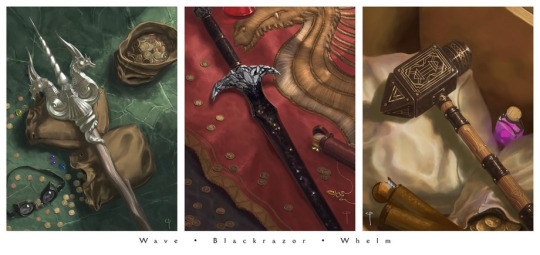
Epilogue
Somewhere out in the blasted desert of Hell, Hecate pulls herself from the crash of her ship and rolls onto the hot red rock. She coughs up black tar and smoke and wheezes as she sucks in clean air. Her eyes are slits of rage as she looks towards the city where her foes disappeared. She shakes a fist of rage towards the sky as she manuevers her snake away from her crashed gun ship.
“Mother!” she screams. “I will have my revenge!”
And then, unexpectedly, a voice answers her from behind. She turns and sees something unusual discarded on the rock behind her, a sword, black as night, and emanating all the power that it had promised to its last bearer, before Aldric lost it and Carrick refused to bring it back. Blackrazor speaks to Hecate, and its voice is pure menace:
“Did I hear you say revenge?
3 notes
·
View notes
Text
Wow, a lot can change in about a year, huh. I was there for TB2, but tapered off it and TB1 sometime for real-life reasons, just before the Girls Gone Astray event in 2… but I’ll leave my thoughts for the end of this (the playthrough).
With version 5.5.3, Terra Battle now has an ending. For the most part, I’m going to be aiming just to finish that. I got to chapter 36 before I stopped playing, so chapter from now to at least chapter 34 will be several versions behind. But nevertheless, onwards:
Chapter 30: Rising World – “The will of countless creatures great and small converges into a single purpose: to protect the future.”
30-1 They live solely for vengeance.

Things are coming to a head, now.
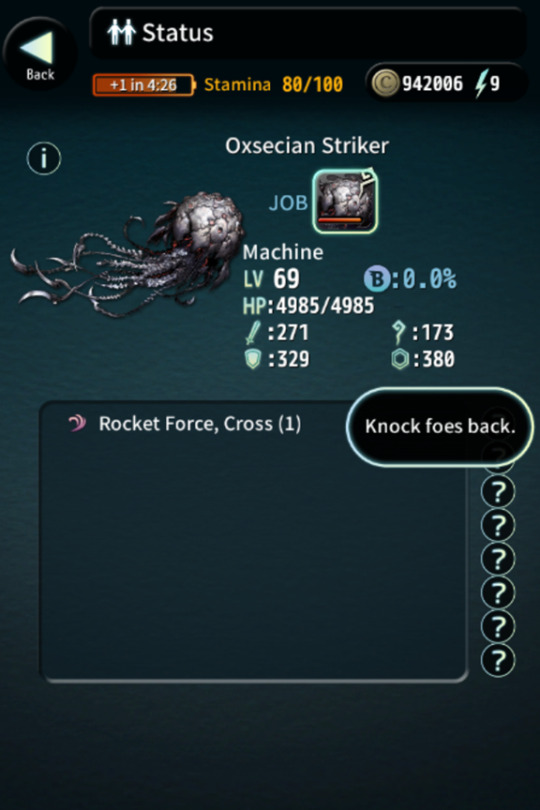
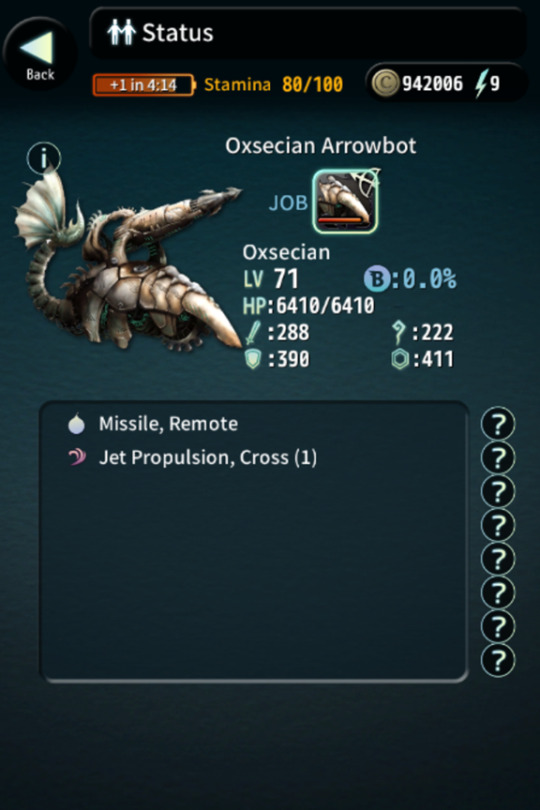
30-1 is five rounds of these two enemies. They aren't too out of the ordinary. The Oxsecian Striker’s Rocket Force move doesn’t do damage, just displaces your units.
30-2 The rancor that has festered in their souls for so long.
The Oxsecian ship unleashes its weapons en masse on Animata, intent on retribution.
This is the day they will finally purge themselves of the rancor that has festered in their souls for so long.

A new face among the two enemies seen in 30-1: sentient space junk! They appear in the second, fourth, and fifth battle alongside some other mooks. Take care of the Oxsecian enemies while hopefully staying out of range of the Space Debris’ status-inducers.
Of the two, sleep is less annoying, so it’s not a bad idea to bring someone with Panacea (at the very least, Palpa will have it, but there’s also have Eileen and Gatz or Sheena w/ Cleansing Caper), or even just Locomotion (Palpa again, but Bonna and Kana are notable for having it while also having Paralysis Ward. Kana’s A class so most people likely have her anyway).
Of course it’s a complete non-issue if you get rid of them first and/or stay out of the AoE, but it never hurts to be careful.
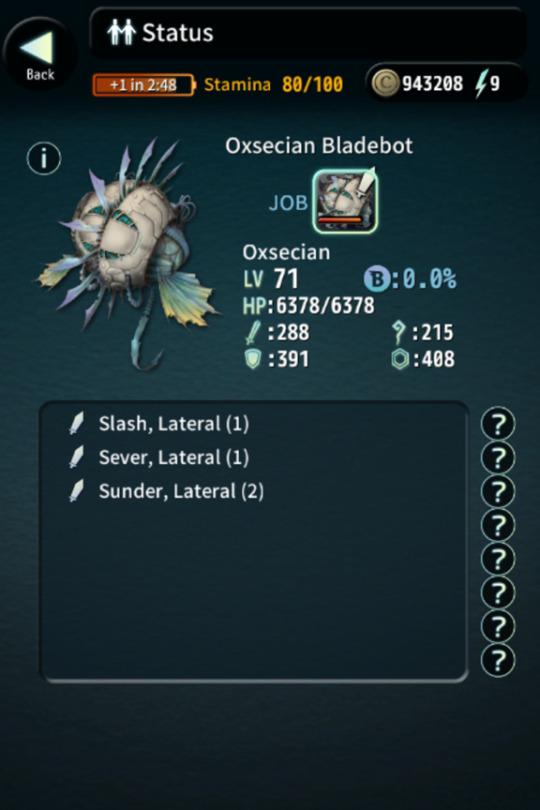
30-2 introduces this, the sword counterpart to the other.
30-3 The king does not budge.
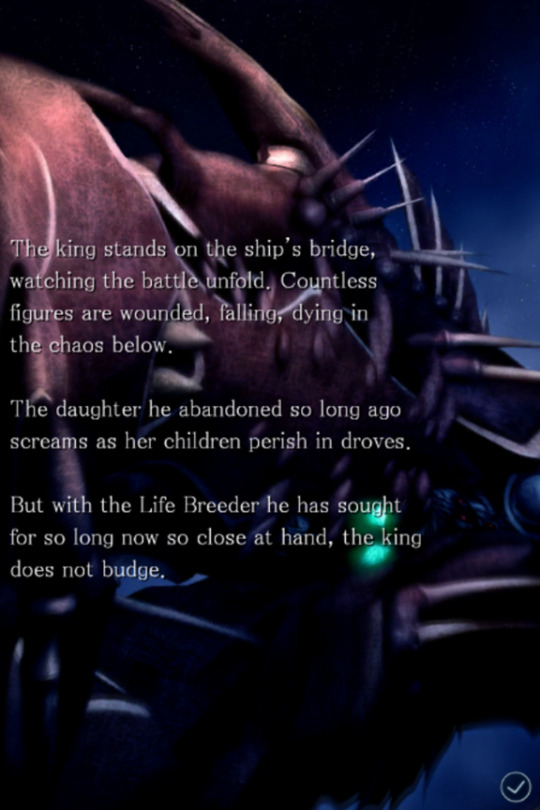
Three battles this time: Space Debris/Oxsecian Bladebots make up the first and third battles; latter is notable since there’s 10 Bladebots to deal with.
30-4 With a subtle, slithering movement.
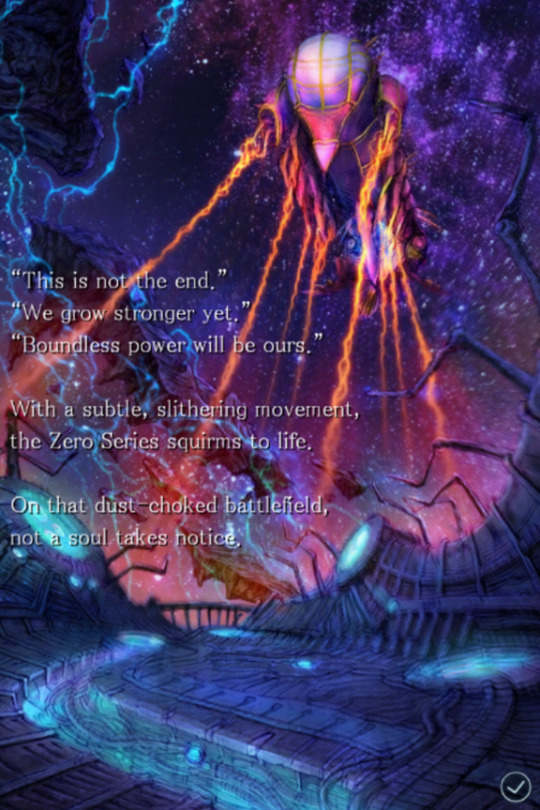



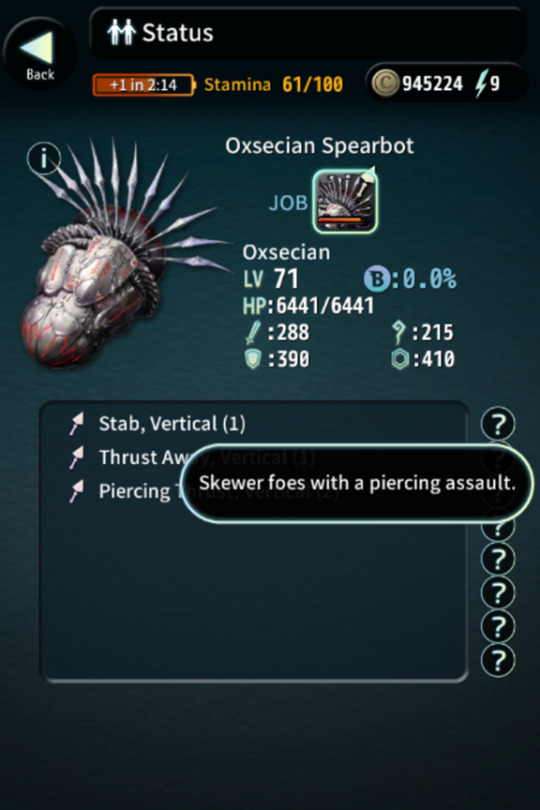
This introduces the Oxsecian Spearbot. Fairly self-explanatory.
There are no Space Debris in this stage; just Bladebots, Spearbots, and Strikers.
30-5 The sound of a massive explosion rips through the air.
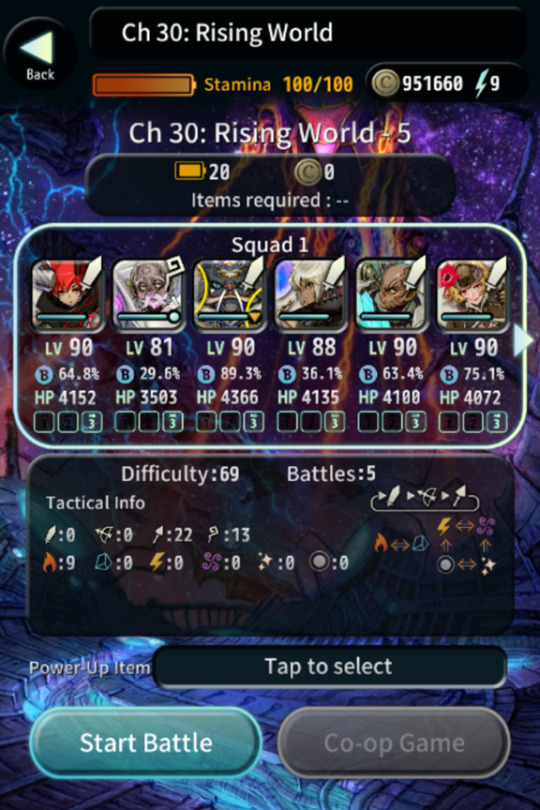
This battle is of spear-enemies, so if you’re not overleveled like my crew, arrows are better.
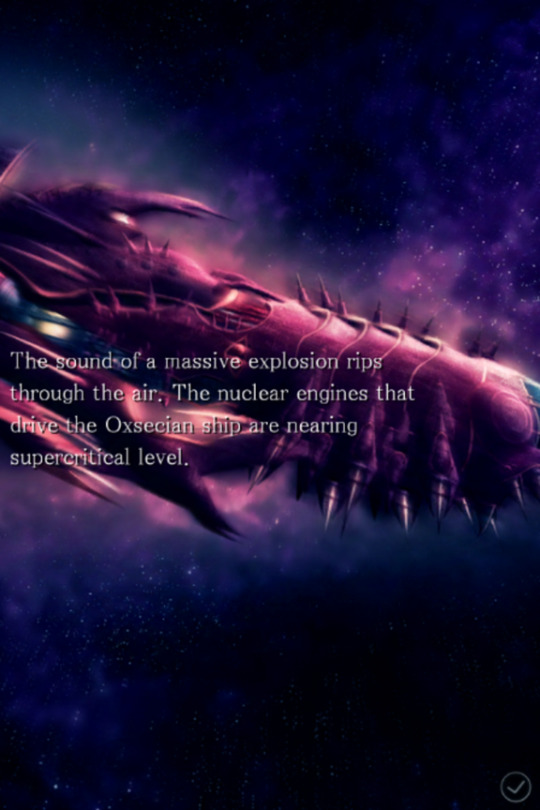
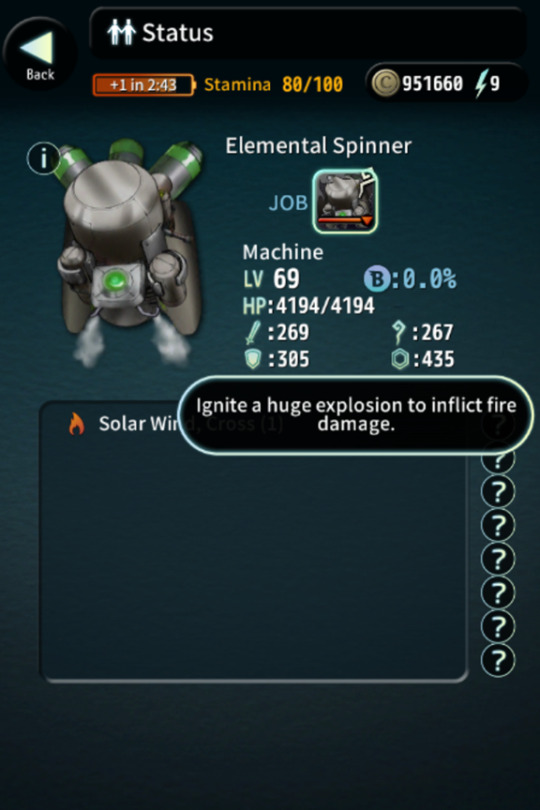
This enemy is introduced here, and I guess is notable because it has Solar Wind, the at-the-time strongest Fire elemental spell (at 3x damage). Its in a cross range, so I guess be aware.
30-6 Shield with Animata.
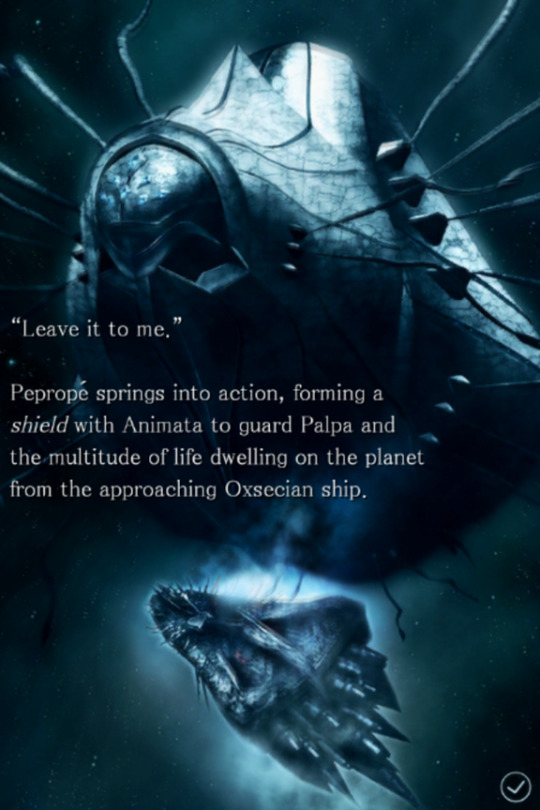
Four battles this time. There’s another new enemy: another Elemental Spinner, this time ice-typed, with Absolute Zero, Cross (1).
30-7 Trust in me, overworlders!

There aren’t any Elemental Spinners here; just fights against Oxsecians.
30-8 Their collective will is sublimated into radiant life.
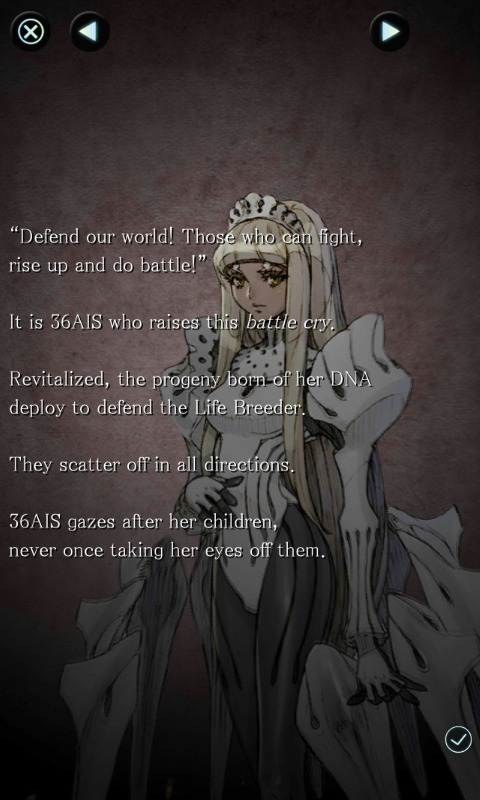
Their collective will is sublimated into radiant life that illuminates all.
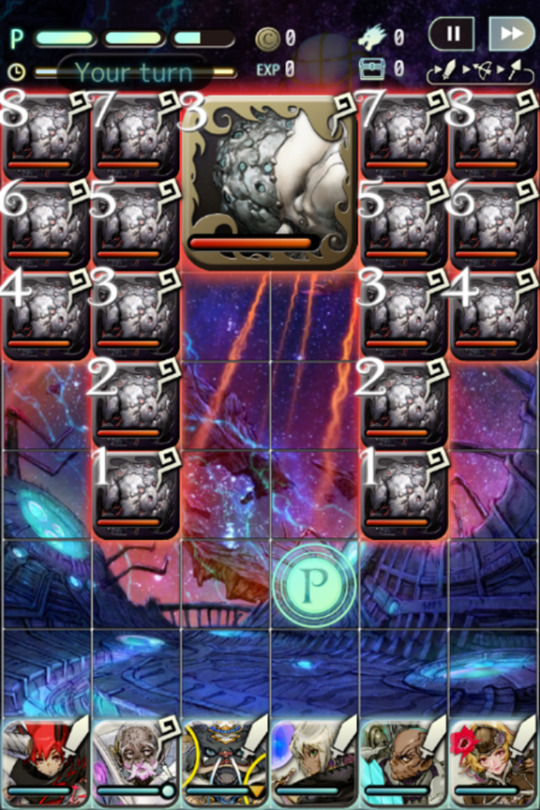
“That radiance, washing over you, becomes a source of newfound strength.”
Before the battle starts, you get the message above. What this does, as you may notice, is fill up the Powered Point gauge to near-full.
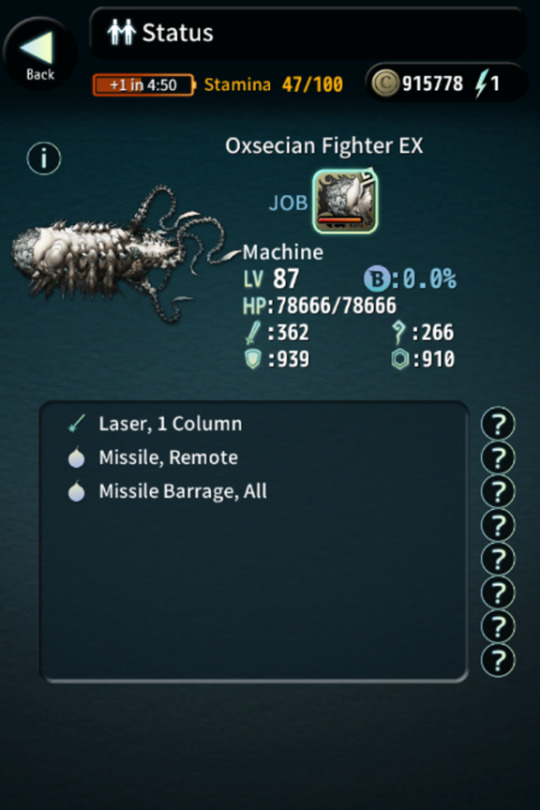
There’s only one battle in this stage; the boss is the Oxsecian Fighter EX (as noted by the 4x4 square), with a whopping 16 Oxsecian Strikers backing them up. For the most part, though, it’s not too bad: its moveset is really simplistic, with the only skill you have to be concerned about being Missile Barrage.
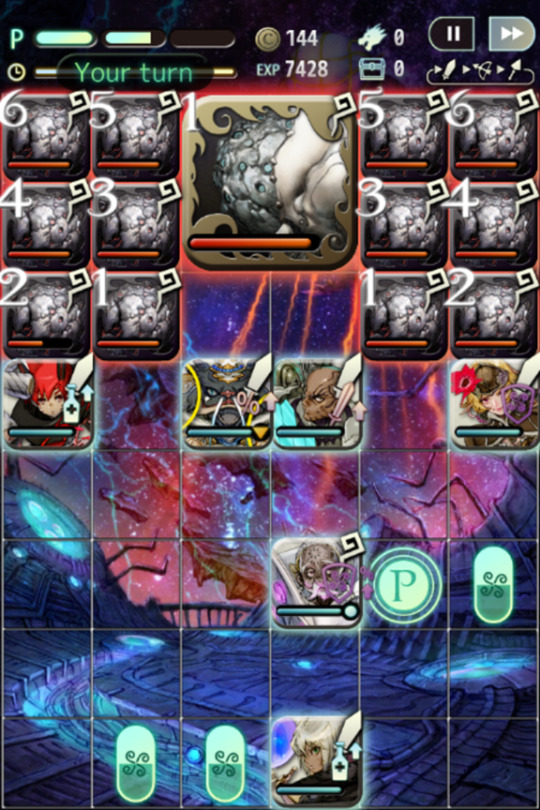
It helps that the mooks have a number of turns before they act, giving you time to pincer them and create some breathing room. They’re all staff, so no circle of carnage advantages. For a pack like this, you’d probably want at least one mage for their AoE attacks.
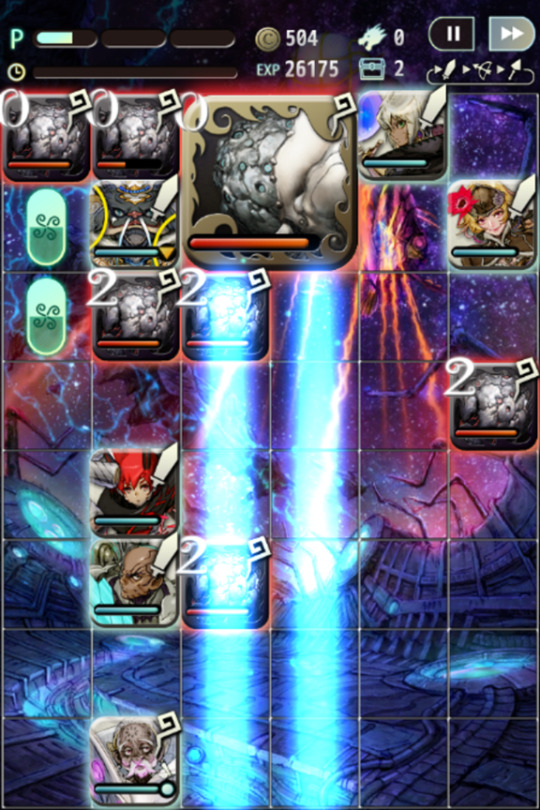
Its laser attack is column only, so just stay out of range.

It will telegraph when it’s about to use Missile Barrage, saying sth among the lines of “Missile Launchers open”; you have a turn to prepare, heal, etc. If you bring anything that has an Ice attack, this will happen, making it lose its turn.
After that, it’s just a matter of chipping it down and any other Strikers it summons. Finally, it can drop Dark Matter and/or Mantle Helixes.
30-9 The power of will evokes a miracle.
The formidable will of the humanoids rouse an even greater power: the beasts that inhabit this world you once dubbed Planet Beastbait.
Humanoid and beast alike stand ready to confront the alien threat.
The resolve to defend their home--and the home of future generations--converges into one will, transcending ecosystems and the planet itself.
The will of countless creatures great and small converges into a single purpose: to protect the future.
As one, they raise their voices in a thunderous rallying cry to that future.
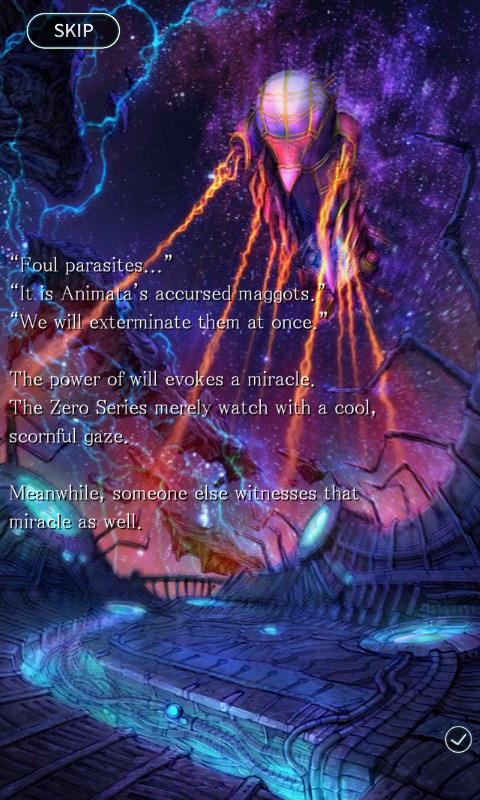
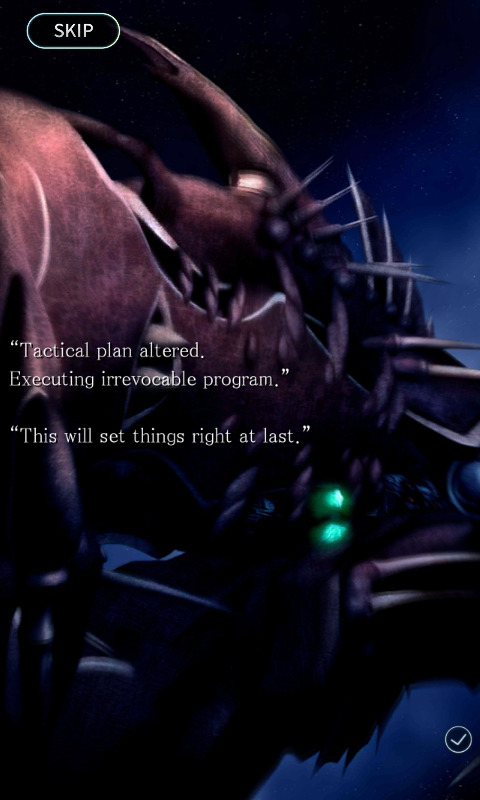
Hmm...
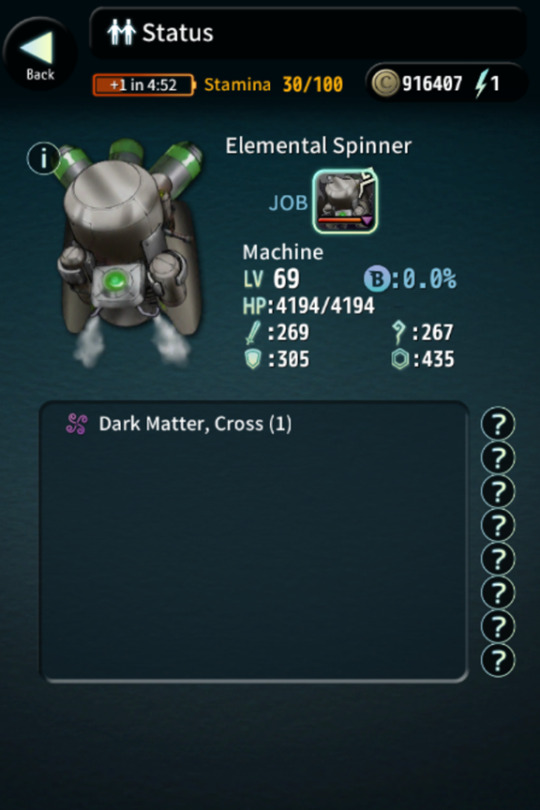
After that fight, 30-9 returns to the 5-battle stage. Another Elemental Spinner is introduced. Good thing there’s no elemental mixing and matching.
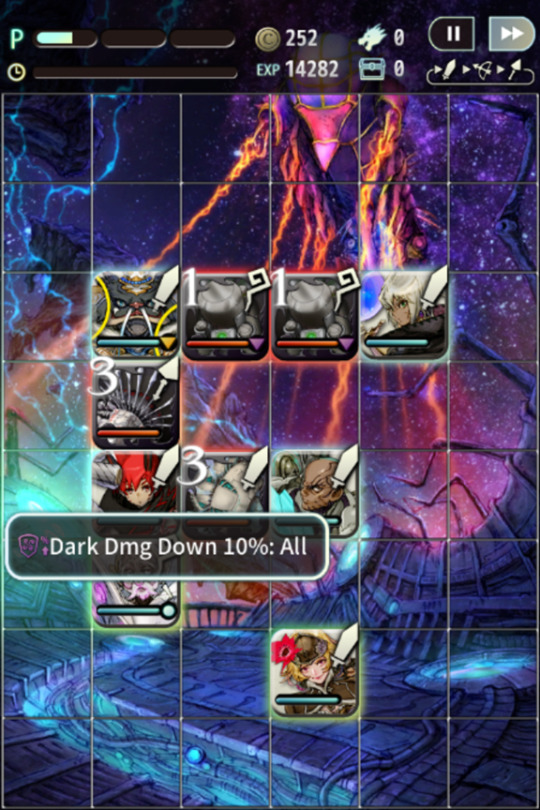
Ba’gunar was helpful for dealing with them, with both type advantage + summoning capsules. If you’re not like me and have great luck, managed to pull someone like Samatha or Jennish – even better.
As an aside, there’s a chance of nabbing a Demon’s Badge otomo from this stage. Its evolved forms eventually provide Death Ward, self – which has some niche uses, I guess!
30-10 AND SO WE RETURN TO ZERO!

Everyone was too caught up in the battle to notice they vanished. But then, perhaps it isn’t a surprise they came back given what we’ve seen of them in previous chapters…

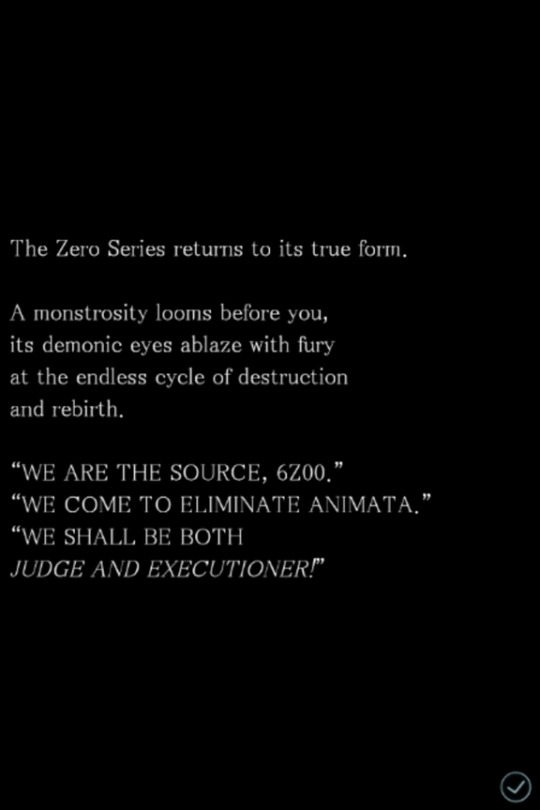
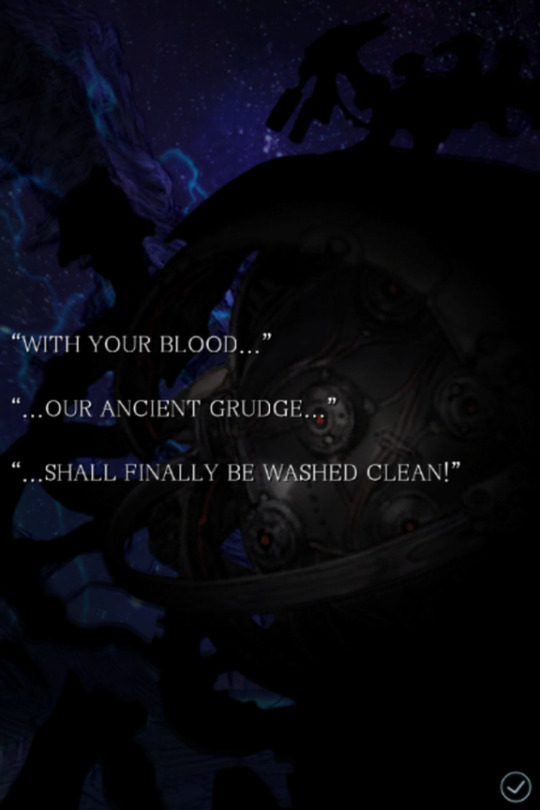
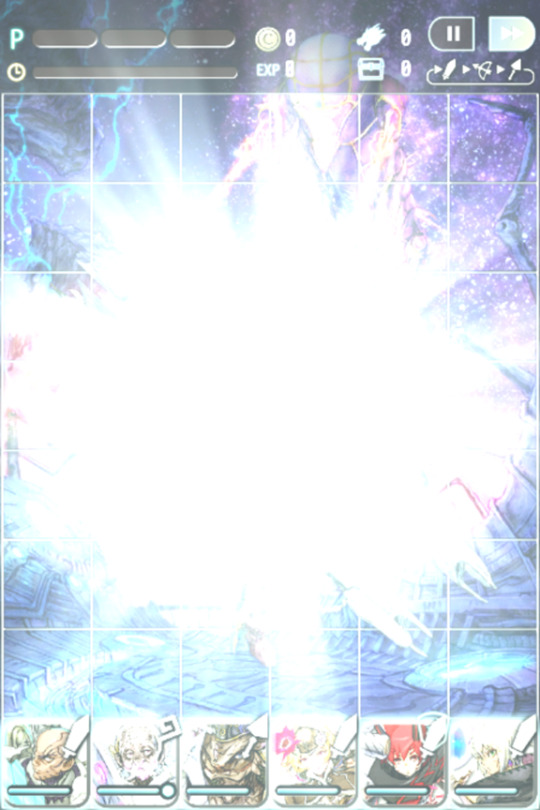
Before the battle even starts, we see each member of the Zero Series fuse together into…
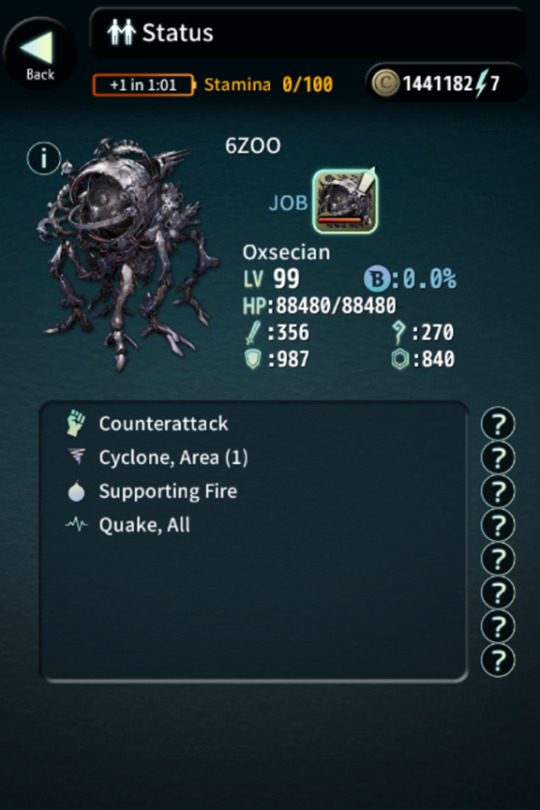
6ZOO. He’ll always start the battle with Cyclone, Area (1), which does damage and knocks units back. At level 99 with those stats, he’s pretty beefy.
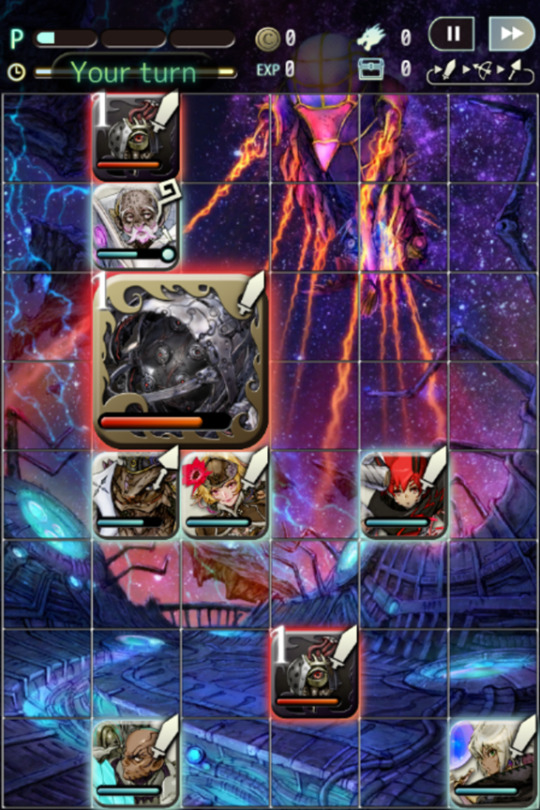
He has Counterattack, but it will always proc when pincered. He also summons two mooks too after using Cyclone; in fact, he follows a pattern of: Cyclone > summon two mooks matching its type > switch weapon. The weapon type switches from Sword (default) > Spear > Bow > Staff, then repeats.
The Staff form is notable because 6ZOO doesn’t summon anything, but will spend a turn preparing to use Quake, All. It’s one of the reasons I brought Gatz.
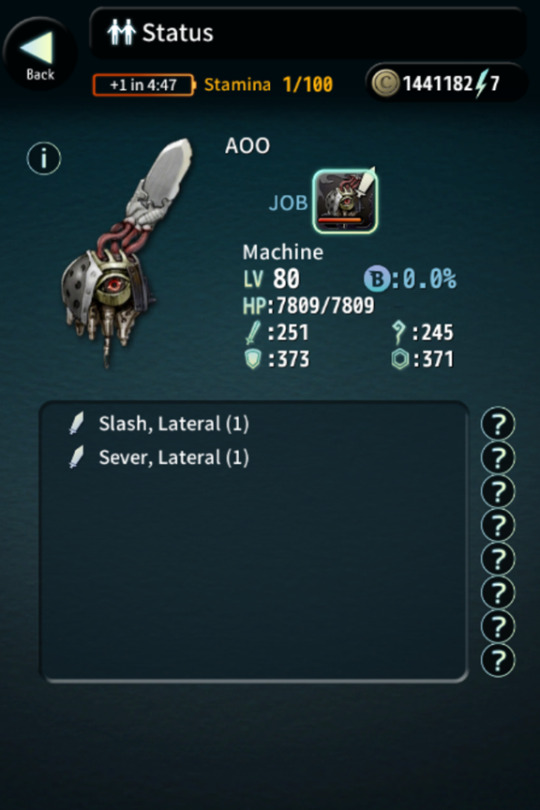
The mooks aren’t too bad, but their attacks can add up as 6ZOO beats your team down. As you clear them, take note: 6ZOO will use Supporting Fire whenever one of the mooks is pincered. Keeping health topped up is seriously important, and this is with a mainly B-class team that’s near his levels. (Fun fact for non-vets: levels used to be maxed out at 70.)
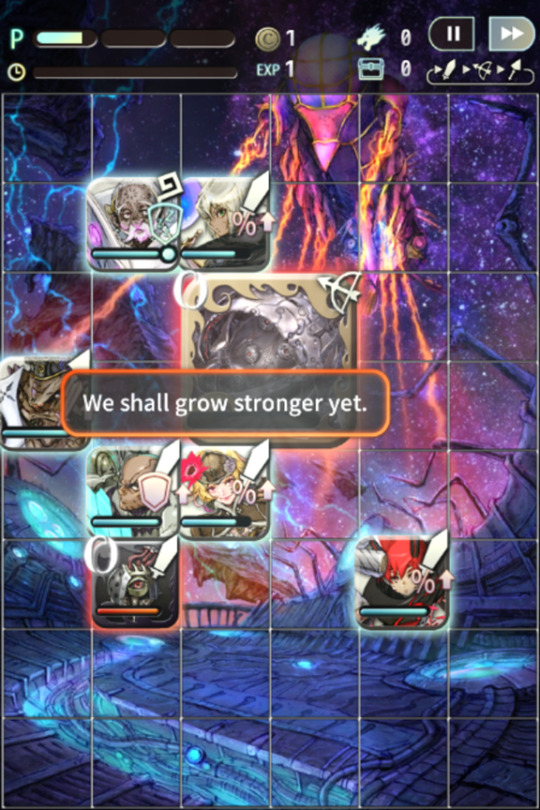
Once you wear it down, it says this…
Music (listen to this!): The World’s Awakening/Day of Reckoning
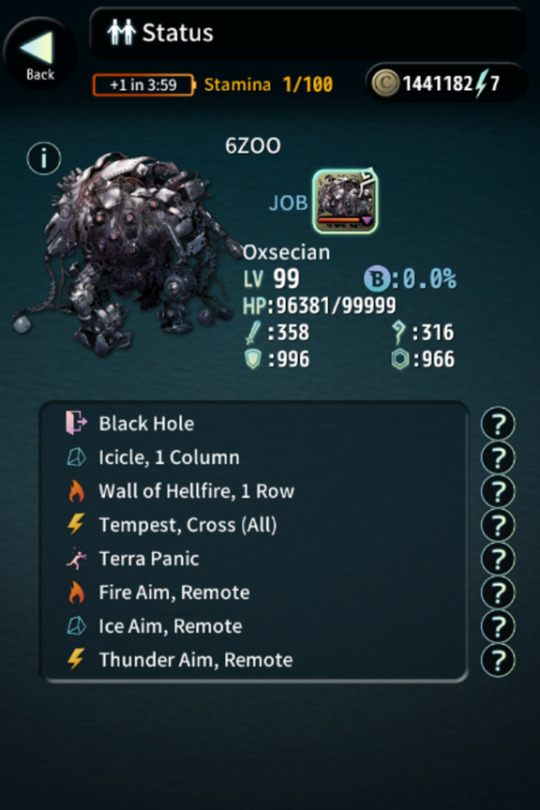
…and transforms again, recovering HP and becoming even more monstrous! This time around, it stays Staff-typed, but switches elements around. As it does, it not only summons corresponding Elemental Matchers, but also absorbs attacks of the same element.
Not a problem if you’re bringing a majority-physical team like I did, but…
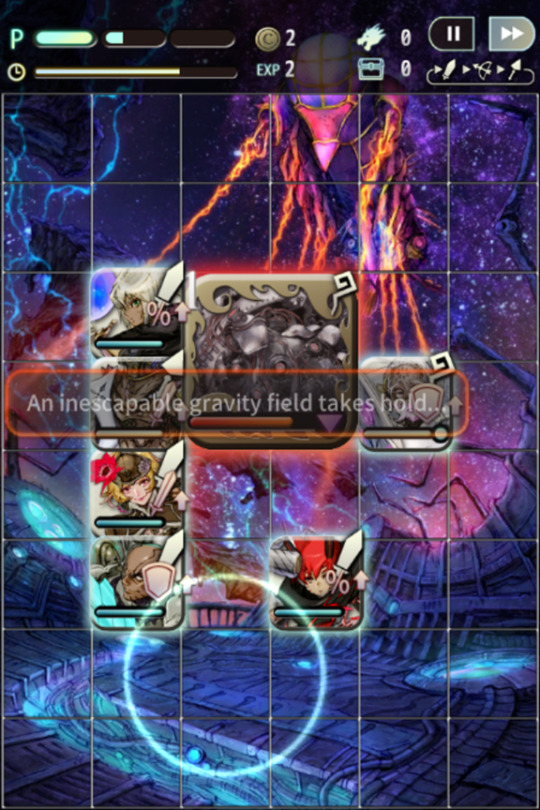
A few turns in, you’ll get this message. It’ll telegraph the big moves, then follow up w/ the corresponding elemental aim attack (except when its Dark-typed):
An inescapable gravity field takes hold… > Black Hole
Crackling bolts cross and spread outward… > Tempest (Cross)
An inferno blazes up on both sides… > Wall of Hellfire, 1 row
A band of frigid air descends… > Icicle, 1 column
Watching and waiting… > Terra Panic, All (occurs at ~25-30% HP)
Tempest and Icicle are explanatory: they’re strong elemental attacks. Wall of Hellfire creates flames on the rows 6ZOO is on – it’s a really damaging stage hazard, though mercifully it only lasts a couple turns and can kill off the mooks. Black Hole transports two random units away for a few turns.
Terra Panic is its big move; it affects everyone with every status effect except Ice/Shadowbind and the Solar/Lunar related ones. As a reminder:
Poison: damages units for a few turns. (not bad normally because it never kills your units, but could potentially help the boss/mooks)
Sleep: units don’t act and can’t be moved for a few turns or until they take damage. (the least dangerous, but iirc they can still be shifted)
Paralysis: unit don’t act and can’t be moved for a few turns. (You can still shift them away, though)
Demoralize: unit’s physical attack and skill proc rate drops to 0 for a few turns; buffs still proc, while demoralized units can still use skills w/ a Powered Point (though physical attacks will hit for peanuts)
Confusion: unit moves around randomly, cannot be controlled, act in chains, or be used to pincer. (This one is pretty bad because your unit is useless until it wears off, and they can put themselves in range of attacks or run through Wall of Hellfire if it’s up)
Petrification: unit turns to stone, cannot be controlled, and can’t be shifted by other units. (IMO the worst status effect because it pretty much never wears off; your units get petrified for 99 turns! By then the battle is over, either with your units dead or the boss dead.)
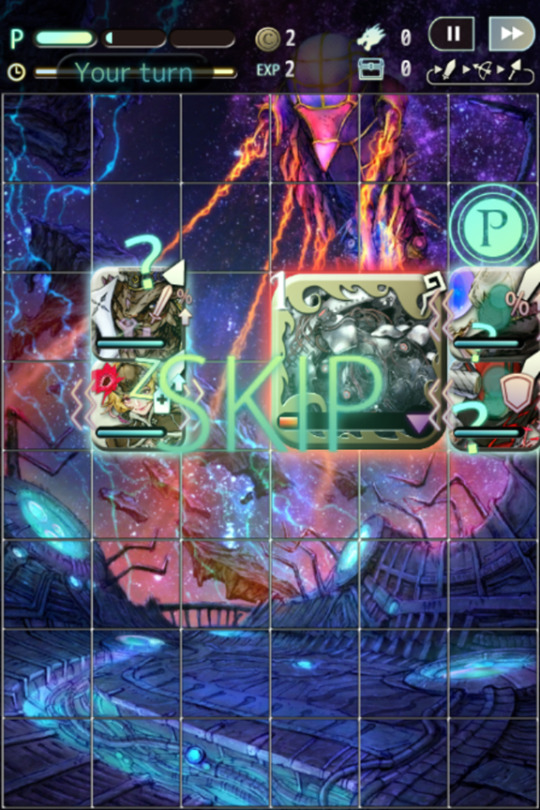
This is why it’s good to bring along a Remedy character or two. I had Gatz (who has Sleep Guard, Adjacent and Panacea by J3) but Bonna comes to mind because her J1/2 teach skills that cure Petrification and Paralysis while she herself gets Petrification/Paralysis Ward, but again, there’s Palpa. Just hope she doesn’t get petrified…
I was lucky to not get petrified, but this was pretty bad, too. Everyone was a sitting duck while Sorman and Zan were off who-knows-where after getting Black Holed.
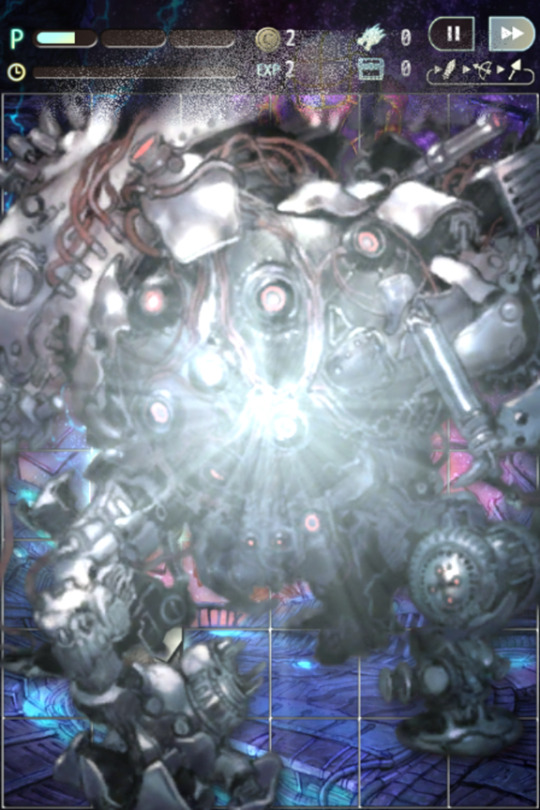
Thankfully after that, things are fairly smooth sailing.
Now, onto the epilogue…

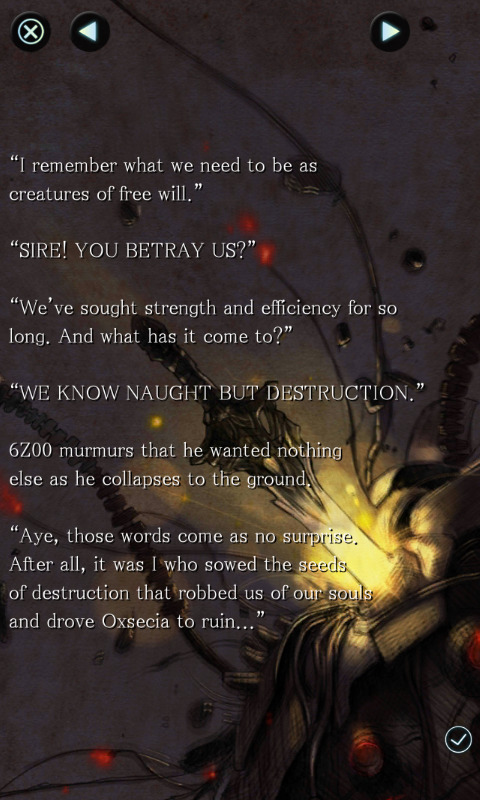

“What is happening?”
“What are we to do?”
“I do not understand.”
“This is no fault of your own. It is simply that I have chosen a brighter future. Forgive me.”
“Father…”
A strange sound emanates from the Oxsecian ship.
“Sire, what have you done?”
It was 6ZOO who set the Oxsecian Ship on its suicidal course.
He sought complete and utter destruction, even if it meant his own end. He desired nothing more and felt no attachment to life.
He was the perfect weapon, destruction incarnate. This was the mission assigned him by his king.
But the king had realized the error of his ways.
“I have changed the ship’s course.”
“WH… WHERE TO?”
“Is there somewhere you wish to go?”
6ZOO does not answer. He has collapsed into a heap of inorganic material.
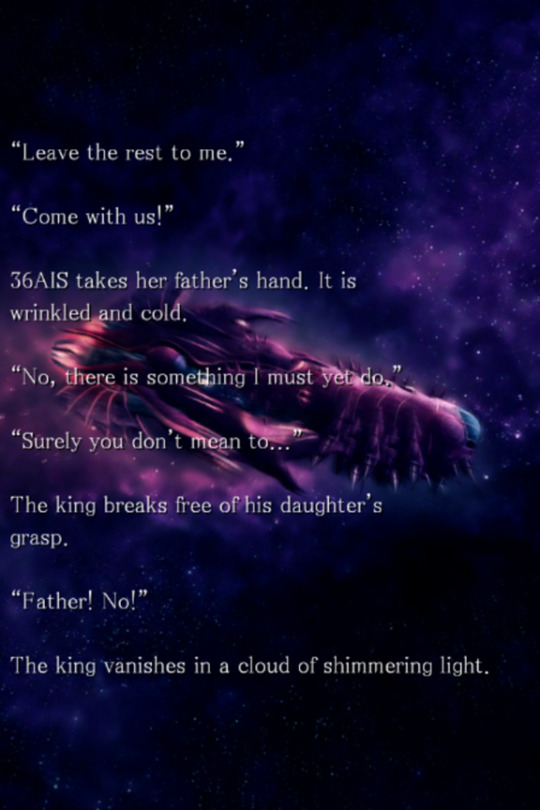
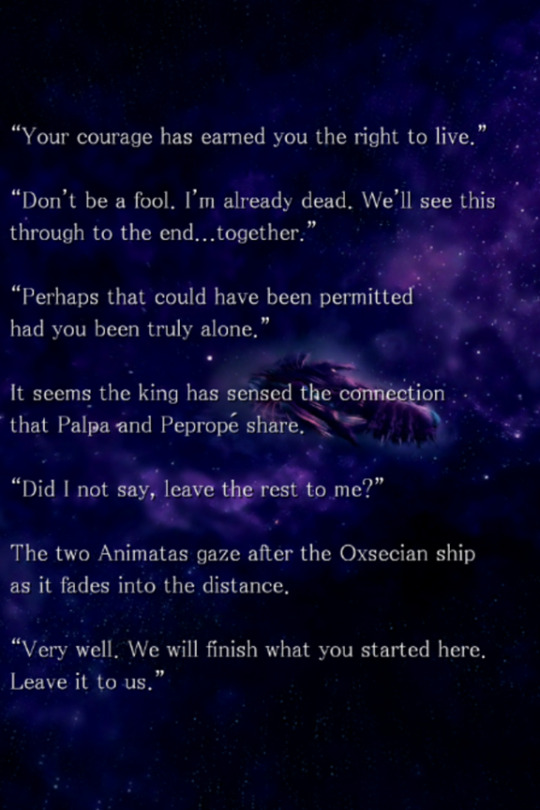
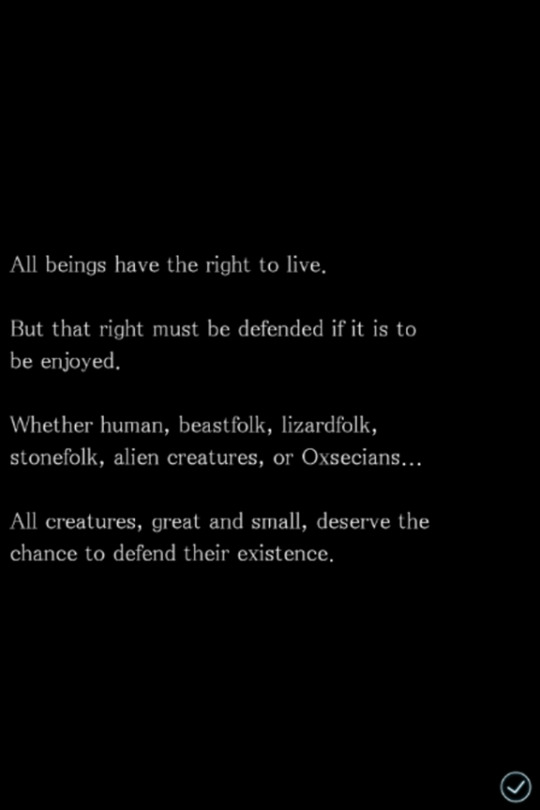
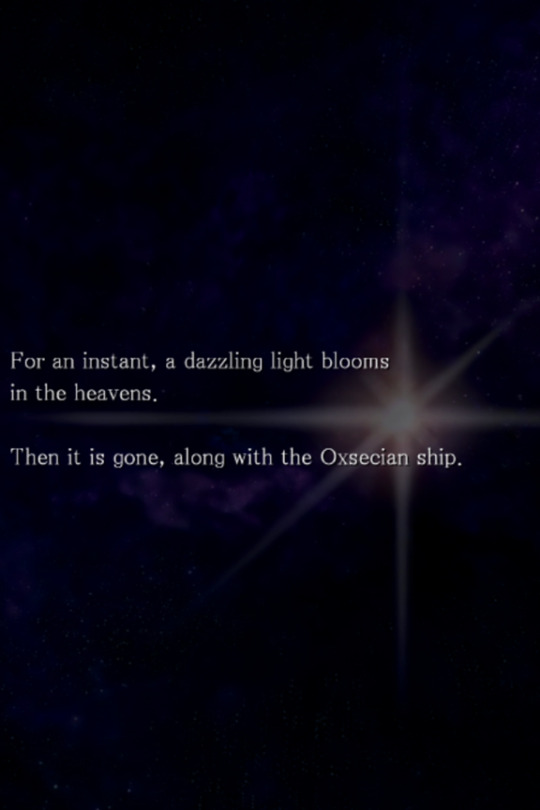

Animata is a massive technological life form. Humans, lizardfolk, beastfolk, stonefolk, and the children of the Oxsecians dwell within her.
All of these are species created from DNA plundered by Animata in her travels. Each has a home world somewhere in the vast universe.
As anyone might do, they seek out their roots to discover their origins.

There’s something really poignant about that simple message, accompanied by that backdrop.
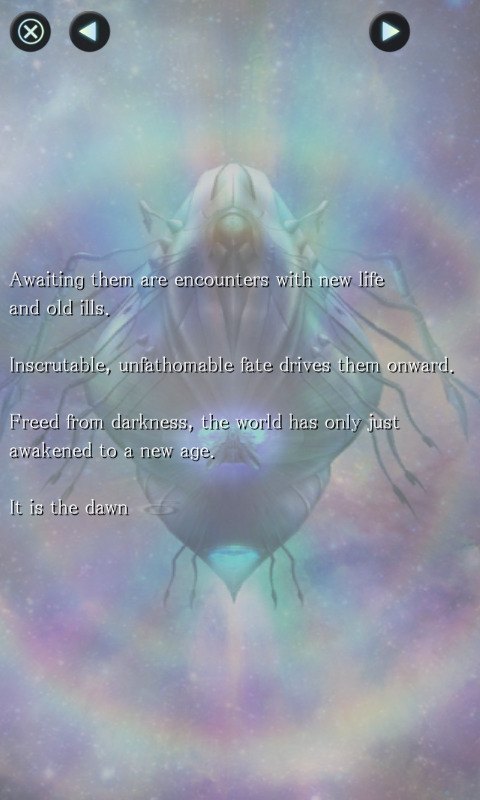


It’s been a long time coming, hasn’t it? With this, part one of Terra Battle is finally, finally complete. Though this may be done, there’s still more left to do. I’ll be putting up the table of contents for part one, and from there on it’s just catching up to my story progress in-game.
Finally: that final boss theme tho, god bless Uematsu. Fantastic track, in a game with great music. I actually remember getting some chills when I played through 30-10.
2 notes
·
View notes
Text
Cara Memasukan Cheat Game Plants Vs Zombie

Cheat kode game plants vs zombie admin mau share buat pecinta gamer'z! Dah, gak perlu basa basi lagi yah sob, nih infonya! Masukan kode dibawah ini saat bermain Plant VS Zombie untuk mengaktifkan cheat sebagai berikut: pinata: munculin hujan permen saat zombie mati trickedout: mengubah tampilan mesin potong rumput (yang. Get the latest Plants Vs. Zombies cheats, codes, unlockables, hints, Easter eggs, glitches, tips, tricks, hacks, downloads, achievements, guides, FAQs, walkthroughs, and more for PC (PC). CheatCodes.com has all you need to win every game you play! Use the above links or scroll down see all to the PC cheats we have available for Plants Vs.
Cara Memasukan Cheat Game Plants Vs Zombies
Cara Memasukan Cheat Game Plants Vs Zombies 2
Cara Memasukan Cheat Game Plants Vs Zombie 2
Strategy Guide/Walkthrough/FAQCorey Feldman InterviewReviewCheat Codes
While playing the game, type one of the following codes to activate the corresponding cheat function. Note: Your Tree Of Wisdom must be a certain height before some codes can be enabled.
Result Cheat Code Alternate Lawn Mower appearancetrickedoutCandy rains when zombies diepinataDaisies appear when zombies diedaisiesZombies walk slowlyslowbokeZombies wear sunglassesfutureZombies have mustachesmustacheZombies dancedance Toggles zombie call for brains soundsukhbir
Gold trophy
Get all the trophies in the Mini-Games, Puzzle, and Survival modes to get the Gold trophy.
Silver trophy
Successfully complete Adventure mode to get the Silver trophy.
Download Standoff Multiplayer Mod APK on MaxModAPK. Mirror 6: Download on Happymod Pro. Download Mod APK. Cheats. Main characters - Vehicles that can be found in GTA 5 - Radio stations. Open world online multiplayer video game developed by Rockstar North and published by Rockstar Games. Standoff Multiplayer tricks hints guides reviews promo codes easter eggs and more for android application. Avoid Standoff Multiplayer hack cheats for your own safety, choose our tips and advices confirmed by pro players, testers and users like you. Ask a question or add answers, watch video tutorials & submit own opinion about this game/app. Download Standoff: Multiplayer v1.22.1 Android Unlimited Ammo Cheated MOD APK + DATA. You will try to kill enemies as many as You can and collect to catch flags. This is your main mission in the game. You need to fight against your enemies and kill them before they attact and counteract you! Download game standoff multiplayer cheats.
Easy money
Resident evil 3 cheat code. Get the Zen Garden. Water the plants until they do not need anything else, then advance the system date ahead. The plants will need water again. Buy new plants, grow them to full size, then sell them. Repeat this to earn more money. You can also use this trick when you have to get Marigolds in Crazy Dave's shop and they are out of stock.
Set up your defenses around the slot machine. Try for one row of walnuts on the right side, one or two rows of sunflowers on the left, and fill everything else with pea and snow pea shooters. Protect the lawn mowers. Each is worth a gold coin ($250) at the end of the game if they did not mow any zombies. Stop collecting sun at about 1,900 sun points. At this point, the garden should be full; getting the extra 100 points to win should be easy. Just collect enough sun to offset the slot machine. Keep the slot machine spinning. It will randomly drop one or three gems, depending on how long your patience lasts. If the zombies get close to the mowers, end the game. Simply collect the sun lying on the field to end the game.
Cara Memasukan Cheat Game Plants Vs Zombies
Use the following trick to make Walnut Bowling more profitable. Protect the lawnmowers, as each mower is worth one gold coin ($250). Line up shots off the front runner. After the first zombie is hit, each additional zombie strike generates coins. Create a front runner where none already exists. Pole vaulting zombies will run fast until they vault over a nut, and the newspaper zombie runs fast after getting the paper destroyed by a nut. Let them run a short distance down the lawn before sending a nut their way. You do not need to use nuts. When there are a few zombies ambling down the lawn without a clear ricochet shot, wait some time to see if more of them will step out to play. They can always be killed once they cross the red line. Remember how many nuts it takes to kill a zombie. This is important when they cross the red line. Use one nut for regular zombies, three for bucket wearing zombies, and two for the others. Cheats another world game. Keep the exploding nuts in reserve. Try not to use them unless a mob crosses the line or there are not enough nuts or room to kill a difficult zombie. Use the regular walnuts for the zombies that have not reached the red line. Do not use exploding nuts to kill pole vaulting zombies directly. Pole vaulting zombies only jump obstacles in their own lane. A pole vaulting zombie who has not vaulted yet will safely jump over explosions or nuts in their own lane. Find a neighbor in the next lane and time the nut to hit when the pole vaulting zombie gets close to the neighbor.
Alternating seed selection
If you do not like the cards from Crazy Dave, exit the game and restart. The cards will change randomly.
Increasing plant growth
Disable full screen mode. Go to your Zen Garden. After feeding the plants, it will normally take thirty minutes before you can feed them again. To feed them all again immediately, change the system time to an earlier value. This will increase their growth.
Getting light in fog
When you are in fog and need light (and you do not have a Lantern), use the Torch Wood if you have the sun. It shows you the space in front of it.
Finding the imitator in Suburban Almanac
Saints cheated out of game. Look at the top left of the almanac, and click there to see the imitator.
Defeating Bungees
To kill Bungees, use a Chomper, Squash, Ice Shroom, Jalapeno, or Umbrella Plant.
Defeating Dr. Zomboss

Cara Memasukan Cheat Game Plants Vs Zombies 2
When Dr. Zomboss comes down to throw an ice ball or fire ball, you can use Freeze Shrooms to freeze him. This allows your various plants time to inflict some damage on Dr. Zomboss. Jalapenos will also cause damage to him when he is about to toss a fire or ice ball. To destroy the ice ball, use a Chili Pepper in that row. To destroy the fire ball, use an Ice Shroom.
Defeating Pole Vaulters
When there are Pole Vaulters, pick a Walnut and a Chomper, and make sure you can dig up plants and have lots of sun. Put down a Walnut and a Chomper behind it. The Pole Vaulter will go over the Walnut and straight into the Chomper. Then, dig up the Chomper to kill the Pole Vaulter.
To win the game of Cheater you must be the first player to spell CHEATER in the same suit: red, yellow, purple, or blue. Game Play Remove the Cheater card from the deck and place it in the center of the playing area. Each player is dealt 7 cards with the remaining cards placed face down to form a DRAW pile. The top card of the DRAW pile is turned over to begin a discard pile. Cheater card game instructions. Cheater is a Rummy type game with one person having special powers. There are 4 suits of cards with the letters C, H, E, A, T, R on them. With 7 cards in hand the goal is to acquire the cards to spell CHEATER in one suit (color). Dumb Ass Card Game. Dumber Than A Box of Rocks Electronic 20Q. Evil Eye Fact or Crap. First 100 Words Activity Game. First 100 Numbers Colors Shapes Bingo Game. Fishing for Words. Five Little Monkeys Can't Catch Me Board Game. Five Little Monkeys Can't Catch Me Card Game Five Little Monkeys Jumping on the Bed Card Game Tin. Five Little Monkeys. 1)If another player rolls doubles, that player takes the CHEATER card, places it in front of him and becomes the game’s new CHEATER. 2)If you are the CHEATER and you roll doubles on your turn, you automatically lose your turn and your status as CHEATER.
Hidden achievement list objects
The achievements are displayed as an underground list. Keep scrolling through the list to see various hidden objects including a zombie, the bookworm from Bookworm, jewels from Bejeweled, a unicorn fossil, and finally Chinese zombies staring back down the hole.
Steam achievements
Cara Memasukan Cheat Game Plants Vs Zombie 2
Successfully complete the indicated task to unlock the corresponding achievement. To view your achievements and stats in Steam, select 'Community', 'My profile', 'View all my games', then the game and view stats.
Ask Me About Mustache Mode: Enable Mustache Mode.
Better Off Dead: Get a streak of over 10 in I, Zombie Endless.
Beyond the Grave: Beat all 20 mini games.
China Shop: Get to a streak of 15 in Vasebreaker Endless.
Cryptozombologist: Discover the top secret zombie.
Don't Pea in the Pool: Complete a daytime pool level without using pea shooters of any kind.
Explodonator: Blow up 10 zombies with a single cherry bomb.
Good Morning: Complete a daytime level by planting only Mushrooms and Coffee Beans.
Grounded: Defeat a normal roof level without using any catapult plants.
Home Lawn Security: Complete adventure mode.
Immortal: Get to 20 flags in Survival Endless.
Morticulturalist: Collect all 49 plants.
No Fungus Among Us: Complete a nighttime level without planting any Mushrooms.
Nobel Peas Prize: Get the golden sunflower trophy.
Penny Pincher: Pick up 30 coins in a row on a single level without letting any disappear.
Popcorn Party: Defeat 2 Gargantuars with Corn Cob missiles in a single level.
Roll Some Heads: Bowl over 5 zombies with a single Wall-Nut.
Spudow!: Blow up a zombie using a potato mine.
Sunny Days: Get 8000 sun during a single level.
Towering Wisdom: Grow the Tree of Wisdom to 100 feet.
Walk This Way: Hypnotize the lead dancer zombie.

0 notes
Text
30/04/20 Reading Kenneth M. Swope’s “A Dragon’s Head and a Serpent’s Tail: Ming China and the First Great East Asian War, 1592-1598″
(1). The Boat’s design
“The most remarkable Korean warships of course were the famous turtleboats, or kobuksön, which were supposedly reinforced with iron plates and spikes across the deck to prevent boarding and lined with cannon across the bulwarks. A turtle’s head at the fore of the boat was supposedly filled with a combination of sulphur and salpeter that spewed blinding smoke to confuse the enemy.” (p. 75)
(2). Excerpt from Yi Sun-Sin’s diary, from Swope’s book.
“Previously, foreseeing the Japanese invasion, I had had a Turtle Ship specially built with a dragon’s head, from whose mouth we could fire our cannons, and with iron spikes on its back to pierce the enemy’s feet when they tried to board. Because it is in the shape of a turtle, our men can look out from inside, but the enemy cannot look in from outside. It moves so swiftly that it can plunge into the midst of even many hundreds of enemy vessels in any weather to attack them with cannon balls and flame throwers. In this voyage our Flying Squadron Captain rode this Turtle Ship in the very van of the fleet. I commanded the Turtle Ship to dart into the enemy formation and to shoot the guns “Heaven, Black, Earth, and Yellow,” which it did. Then the Japanese robbers poured down fire like hail from their positions on the mountains, at the foot of the hill and on the boats. In the midst of the battle, I plainly saw that some Korean traitors, mixed in with the enemy’s rank and file, also shot at us. This made me very angry. I ordered my oarsmen to row my Flag-Ship at top speed, and dashed to the foremost front, hammering the enemy vessels; then my officers and ships’ captains rallied around me and hurled cannon balls, long arrows, winged arrows, fire arrows, and other death dealing missiles from big guns “Heaven and Earth,” while our battle cries shook the land and sea. Finally shrieks and death agonies were heard from the enemy vessels as their warriors fell dead or ran away with the wounded on their shoulders in countless numbers. The survivors pulled further up the hill and dared not come forward to fight”.
This excerpt really shows the significance of the turtle ship, as a vessel of mighty power. We are very lucky to have access to such a diary entry from Yi Sun-sin, because it provides me with important evidence for suggesting why it was presented it as a gift, and the symbolism for the turtle ship.
(3). Description of the full size boat as by Swope:
“Korean success in these battles rested in the superior firepower and maneuverability of the turtleboat. Although still a point of debate, according to most modern reconstructions, a turtleboat was about 35 meters long, with a 9-meter beam, and measured about 2.5 meters from bottom to deck. Bulwarks on each side were fitted with ports for guns and cannon. The turtle’s head was about 1.5 meters long and 1 meter wide and filled with a combination of sulfur and saltpeter, which when mixed produced a smokescreen. The vessel contained twenty-four cabins, five of which were used for powder magazines, arms, and gear; the rest were used for sailors. It had ten oars to a side and probably carried forty or more cannon, one or two heavier pieces, fire arrows, and assorted bombs and incendiaries to be thrown by the crew.”
(4). The Turtle boat as a symbol:
“One would be hard pressed to find another four-hundred-year-old conflict anywhere in the world with as much contemporary visibility. Shrines, memorials, and statues to the heroes and battles of the war dot the Korean countryside, while in Japan some of its commanders were deified in the ensuing Tokugawa period. From 2004 to 2005 a yearlong bio-epic on the life of Adm. Yi Sunsin (1545–98), Korea’s greatest national folk hero, whose exploits are credited with saving the country from destruction, aired on South Korean television. At one time in the 1970s, statues of Admiral Yi were placed in public schools all over the country, both to inspire patriotism and to demonstrate the government’s steadfast resolve to defend the country against the communist threat from the north; one huge statue guards the approach to the president’s house in Seoul. Strolling through the capital’s many gift shops, one is inundated with pewter figurines of Yi and his famous turtleboats (kobuksön). You can even buy commemorative pewter shot glasses engraved with the admiral’s likeness or packs of cigarettes bearing the image of a turtleboat.”
This is significant evidence for the argument that Rutt was gifted the turtle shop as a symbol of military might and patriotism. After looking at sculptures that have been built in Korea during the 20th century, it does allude to the idea that the turtle ship was given as a representation of Korea’s might. The text indicates that “one huge statue guards the approach to the president’s house in Seoul”. Richard Rutt spent much of his time there, and so a combination of Rutt’s work with the Asiatic Society in Seoul and the national significance of Yi Sun-sin (who is associated with the turtle ship), leads me to suggest he was given this as a patriotic gift. As a ubiquitous symbol found in gift shops and statues, it does not seem unusual he was gifted this.
(5). Academic conference that might suggest Rutt attended a similar one in 1969:
“A recent academic conference on the war held in the South Korean seaside town Tongyöng, located near Admiral Yi’s naval base at Hansan Island, attracted scholars from Korea, Japan, Europe, and North America.3 The mayor of Tongyöng greeted the attendees, who were feted with a series of receptions and banquets. One of Japan’s largest daily newspapers, the Asahi Shimbun, sent multiple reporters and photographers to cover the gathering, which received two days of print coverage the following week. The fact that a four-century-old war would receive such extensive national media attention suggests the conflict’s enduring significance and place in the public eye in both Korea and Japan.”
I found this excerpt from the book very insightful. Richard Rutt was associated with the Royal Asiatic society, which was filled with scholars, missionaries and academics. Perhaps, Rutt was gifted this turtle ship at an event that was similar to this. As far as I know, there were no excursions made by the Royal Asiatic Society Korea in 1969 until March, so that if Rutt was attending an event of celebration of this kind, it would not have been as a trip done by the society. But the event does signify the significance of the War beginning in 1592, and shows that it is still being commemorated as a great military victory to this day.
(6). Military might and the turtle ship symbol reasserted:
“The broad scope of this conflict has even prompted one Chinese scholar, Li Guangtao, to call this war the single greatest event in the history of East Asia. Yi was back to his old tricks, darting in and out among Japanese vessels and creating havoc with his turtleboats. He killed one Japanese naval commander and nearly finished off another. It is said that the enemy “lost all color and wept in fear” when they saw Yi once again at the head of a Korean fleet.”
“The war is also a symbol of perseverance and the will to prevail against overwhelming odds. Koreans are rightfully proud of Yi Sunsin and the righteous armies, and their exploits are well chronicled and memorialized all over Korea. It is no accident that Yi’s war dairy and memorials to court are among the few primary sources of Korean history that have been translated into English and that miniature statues of the admiral and his turtleboats are readily available in gift shops.”
Again, this reiterates the popularity of the turtle boat and the symbolism they manifest in Korea. The turtle ship model, or status of Yi Sun sin seem to act as a sort of public spirit and morale. In other words, the way the British flag or the Barbary lion (English national animal) brings about a feeling of patriotism for Britain, statues of Yi Sun-sin and turtle ships act as a source of identity. I arrive at the same conclusion that Rutt was gifted this turtle ship as a sign of Korean nationalism and military might.
Source: Kenneth M. Swope, “A Dragon’s Head and a Serpent’s Tail: Ming China and the First Great East Asian War, 1592-1598″, (USA: University of Oklahoma, 2009)
0 notes
Text
How to Let Go of Any Possession
By Leo Babauta
Over the years, I’ve come to be very good at letting go of just about anything.
In fact, I’ve come to relish the joy of letting go of possessions. It’s liberating and delicious!
But most people I know struggle with letting go of the possessions they hold onto most tightly. There’s nothing physical that keeps us from letting go of possessions — it’s just our attachment that gets in the way.
I’m going to share how I let go of attachment to possessions (other kinds of attachment, I’m still figuring out!) in this short guide.
If you follow this guide, you will become a certified minimalist!
The Guiding Principle
In theory, we can let go of every single possession. Sure, for practical purposes, we’ll need at least one outfit and shelter and a way to eat and use the bathroom. And even more practically, we’ll need a house and things to wear for a job and so on. But letting go of a possession that you don’t absolutely need for practical purposes is theoretically possible.
So what stops us?
Every possession gives us something beyond pure practicality. Or at least, we believe that they do. This is the key to understanding how to let go — understanding what you believe the possession does for you.
For example, here are some common things we think possessions give us:
Security: Having items that keep you safe, or that you keep “just in case,” give us the illusion of some kind of security. When we’re feeling uncertainty, we run out and buy things. The truth is that even with a house full of safety items and emergency preparation items and backup everything … we still have insecurity. There is still tremendous uncertainty. We could get blown up by a nuclear missile, demolished by a hurricane or raging fire, or die of a heart attack or cancer, despite our best preparations. Security is an illusion.
Comfort: We keep a lot of things because we think they give us comfort or pleasure. For example, snack foods, video games, anything else you find pleasurable or comfortable. They might seem to give you temporary pleasure or comfort from stress … but it’s like scratching an itch that just keeps being itchy, and that gives you sores from scratching it so much. Eating junk food (and all the other forms of pleasure and comfort we all indulge in) only gives you more pain and less comfort over the long term.
Self-image: Most items fall under this category — we keep things because we feel they give us a certain self-image. For example, a leather jacket might make you feel cool (or maybe if it has metal studs, you feel tough), or having certain books on your shelf might make you feel educated or smart. If you have a lot of expensive stuff, you might feel they give you the image of success. Most of the things you have that aren’t 100% practical give you a certain self-image. Except … they don’t. The self-image is completely generated in your head. It’s not real, but to the extent that it’s in your head, it wasn’t created by possessions — it was created by you.
Love: If you have something given to you by a grandparent, or other loved one … you might think that item gives you certain memories, certain emotions. In essence, you think that cherished gift gives you their love. But their love isn’t in the thing. It doesn’t come from the thing. In fact, the love is in you. You generate the love and memories. The item is unnecessary for this process.
You get the idea. There might be other things you think that your possessions give you … but they don’t really give you those things. They come from within you.
You give yourself a sense of security, comfort, self-image, memories and love. Not any item.
Letting Go of the Most Difficult Possessions to Release
Of course, we don’t have to get rid of everything … but what would it feel like to let go of your most tightly held attachments? Could you discover a new sense of self, a sense of liberation, a world full of new possibilities?
What would it be like if you let go of everything you didn’t absolutely use and need on a regular basis? Sure, keep your car, phone, computer, basic clothing and toiletries. Keep your most essential dishes and cookingware. Keep your couch and bed and dresser drawer. But see what it would be like to get rid of most of the other stuff — I bet you’ll find it as enlightening as I do.
With the Guiding Principle from the previous section in mind, let’s look at how to let go of the possessions that most people have difficulty releasing:
Books. If you love books, you probably have a hard time letting them go. You might not even question the need to have so many. It’s part of who you are. But instead of solidifying who you are, consider who you’d be without all of them. What if you had zero books? Who would you be? It’s an open question. You can reinvent yourself, and you don’t need books to find out who you really are. Try this: pick the books you’re actually going to read in the next 6 months. Base the number on how many you’ve actually read in the last 6 months. Now let go of everything else, because you don’t need them. You can usually get them at the library, if you ever really want it again. But you can find free or cheap books all over the place, and won’t need the books on your shelf in a year.
Photos, mementos. I’m not saying you need to get rid of all photos and mementos. But they don’t give you what you think they do — the love for your loved ones is in your heart, not in the photos, and the memories of your trip to Greece aren’t in that trinket you got in that store in Santorini. Instead, why not just snap photos of everything using your phone, and put them in a folder you use for a rotating screensaver? You’ll still have the reminders of your experiences and loved ones, but without the possessions you don’t need.
Gifts. Often we keep these for the same reason as photos and mementos — they remind us of loved ones who gave us the gifts. Deal with those in the same way as photos and mementos above. But often we hold on to gifts because of a sense of obligation, as if we owed it to our loved ones to hold on to every gift they have given us. No! Gifts aren’t an obligation, a burden to carry for the rest of your life. They are a gesture of love, one that is received as soon as the gift is given, but the love isn’t in the gift itself. And the love certainly isn’t in the sense of burden and obligation. Instead, snap a photo of the gift, and give it to someone who will actually use and treasure it.
Clothes that make you feel a certain way. Maybe your clothes make you feel cool, trendy, beautiful, badass. Maybe it’s not clothes, but shoes, a bag, a pocket knife, or some gadget you carry around. We wear or carry these things to give people a certain image of ourselves, and to feel a certain way. In truth, we create this feeling and self-image, not the things. And we can’t control how other people will see us. Even better, let’s let go of that worry, and just be as true to our hearts as we can be, without posturing or pretending by dressing a certain way. Imagine if you just wore minimal, functional clothing, and let people form their impression of you by interacting with you, by experiencing your raw open heart. What a world that might be!
Exercise or outdoor equipment. Do you actually use the equipment? I can’t tell you how many people I know who have bought a treadmill, elliptical machine, rowing machine or nautilus weight set and then used it only three times. The machine sits there for years, gathering dust. Let it go! You can still get fit without it — try going for a walk, adding in a few running or sprint intervals if the walk is too easy. Try doing some pushups, lunges, squats, chinups. Try some sun salutations for 20 minutes. Try pliometric exercises if those are too easy. We barely need anything (if anything) to get fit and healthy, to enjoy the outdoors.
Items for hobbies you’re not actually doing. Over the years, I’ve gotten into a few hobbies that I was into for a month or so, and then fell out of interest with them. I kept thinking I was going to start them again sometime soon. And I kept not doing it. Finally I let go of all of those items, and it was a huge relief. I didn’t have to keep feeling guilty that I wasn’t doing those hobbies. I could just do the things I love doing right now, without some kind of placeholder for the future.
Just-in-case items. These are things you might need someday, but haven’t used for years. Let ’em go. Ask yourself, “What are the chances I’ll really need this?” And also ask, “In the slim possibility that this need actually arises … how hard would it be for me to make do without, borrow the item, or find a cheap replacement for it?” For most things I’ve let go like this, I’ve never once needed it again. For others, I could get at a thrift store, borrow from a friend, or buy a cheap version at a big box store if necessary. I have never regretted letting go of these items. The security they give you is an illusion anyway — why not try living without any of that false sense of security? Why not embrace the uncertainty of life, and trust that you’ll be able to deal with whatever comes up? You always have so far.
Things you spent a lot of money on. There is the guilt of getting rid of that item because you spent hundreds (or thousands) of dollars on it. The feeling that you’re wasting that money by giving it away. But you wasted the money when you bought it … holding onto it for longer and not using it doesn’t change that fact. Let go of the sunk-cost fallacy and just cut your losses. Forget about what you spent on it in the past (that’s gone) and think about what benefits you’ll get going forward … and what the costs are going forward. Most likely the costs of holding onto these items is much more than the (non-existent) benefits of holding onto them.
You might have other aspirational items (see the sections above on books and hobbies) or items that make you feel a certain way (see the section on clothing above) … but it all boils down to this:
You don’t need possessions to give you a feeling about yourself or your life. It all comes from within yourself — you yourself are the creator of who you are.
With that in mind, try letting go of that which you don’t absolutely use and need, and explore what happens. It’s one of the things I savor the most.
How to Let Go of Any Possession published first on https://mensproblem.tumblr.com
0 notes
Text
How to Let Go of Any Possession
By Leo Babauta
Over the years, I’ve come to be very good at letting go of just about anything.
In fact, I’ve come to relish the joy of letting go of possessions. It’s liberating and delicious!
But most people I know struggle with letting go of the possessions they hold onto most tightly. There’s nothing physical that keeps us from letting go of possessions — it’s just our attachment that gets in the way.
I’m going to share how I let go of attachment to possessions (other kinds of attachment, I’m still figuring out!) in this short guide.
If you follow this guide, you will become a certified minimalist!
The Guiding Principle
In theory, we can let go of every single possession. Sure, for practical purposes, we’ll need at least one outfit and shelter and a way to eat and use the bathroom. And even more practically, we’ll need a house and things to wear for a job and so on. But letting go of a possession that you don’t absolutely need for practical purposes is theoretically possible.
So what stops us?
Every possession gives us something beyond pure practicality. Or at least, we believe that they do. This is the key to understanding how to let go — understanding what you believe the possession does for you.
For example, here are some common things we think possessions give us:
Security: Having items that keep you safe, or that you keep “just in case,” give us the illusion of some kind of security. When we’re feeling uncertainty, we run out and buy things. The truth is that even with a house full of safety items and emergency preparation items and backup everything … we still have insecurity. There is still tremendous uncertainty. We could get blown up by a nuclear missile, demolished by a hurricane or raging fire, or die of a heart attack or cancer, despite our best preparations. Security is an illusion.
Comfort: We keep a lot of things because we think they give us comfort or pleasure. For example, snack foods, video games, anything else you find pleasurable or comfortable. They might seem to give you temporary pleasure or comfort from stress … but it’s like scratching an itch that just keeps being itchy, and that gives you sores from scratching it so much. Eating junk food (and all the other forms of pleasure and comfort we all indulge in) only gives you more pain and less comfort over the long term.
Self-image: Most items fall under this category — we keep things because we feel they give us a certain self-image. For example, a leather jacket might make you feel cool (or maybe if it has metal studs, you feel tough), or having certain books on your shelf might make you feel educated or smart. If you have a lot of expensive stuff, you might feel they give you the image of success. Most of the things you have that aren’t 100% practical give you a certain self-image. Except … they don’t. The self-image is completely generated in your head. It’s not real, but to the extent that it’s in your head, it wasn’t created by possessions — it was created by you.
Love: If you have something given to you by a grandparent, or other loved one … you might think that item gives you certain memories, certain emotions. In essence, you think that cherished gift gives you their love. But their love isn’t in the thing. It doesn’t come from the thing. In fact, the love is in you. You generate the love and memories. The item is unnecessary for this process.
You get the idea. There might be other things you think that your possessions give you … but they don’t really give you those things. They come from within you.
You give yourself a sense of security, comfort, self-image, memories and love. Not any item.
Letting Go of the Most Difficult Possessions to Release
Of course, we don’t have to get rid of everything … but what would it feel like to let go of your most tightly held attachments? Could you discover a new sense of self, a sense of liberation, a world full of new possibilities?
What would it be like if you let go of everything you didn’t absolutely use and need on a regular basis? Sure, keep your car, phone, computer, basic clothing and toiletries. Keep your most essential dishes and cookingware. Keep your couch and bed and dresser drawer. But see what it would be like to get rid of most of the other stuff — I bet you’ll find it as enlightening as I do.
With the Guiding Principle from the previous section in mind, let’s look at how to let go of the possessions that most people have difficulty releasing:
Books. If you love books, you probably have a hard time letting them go. You might not even question the need to have so many. It’s part of who you are. But instead of solidifying who you are, consider who you’d be without all of them. What if you had zero books? Who would you be? It’s an open question. You can reinvent yourself, and you don’t need books to find out who you really are. Try this: pick the books you’re actually going to read in the next 6 months. Base the number on how many you’ve actually read in the last 6 months. Now let go of everything else, because you don’t need them. You can usually get them at the library, if you ever really want it again. But you can find free or cheap books all over the place, and won’t need the books on your shelf in a year.
Photos, mementos. I’m not saying you need to get rid of all photos and mementos. But they don’t give you what you think they do — the love for your loved ones is in your heart, not in the photos, and the memories of your trip to Greece aren’t in that trinket you got in that store in Santorini. Instead, why not just snap photos of everything using your phone, and put them in a folder you use for a rotating screensaver? You’ll still have the reminders of your experiences and loved ones, but without the possessions you don’t need.
Gifts. Often we keep these for the same reason as photos and mementos — they remind us of loved ones who gave us the gifts. Deal with those in the same way as photos and mementos above. But often we hold on to gifts because of a sense of obligation, as if we owed it to our loved ones to hold on to every gift they have given us. No! Gifts aren’t an obligation, a burden to carry for the rest of your life. They are a gesture of love, one that is received as soon as the gift is given, but the love isn’t in the gift itself. And the love certainly isn’t in the sense of burden and obligation. Instead, snap a photo of the gift, and give it to someone who will actually use and treasure it.
Clothes that make you feel a certain way. Maybe your clothes make you feel cool, trendy, beautiful, badass. Maybe it’s not clothes, but shoes, a bag, a pocket knife, or some gadget you carry around. We wear or carry these things to give people a certain image of ourselves, and to feel a certain way. In truth, we create this feeling and self-image, not the things. And we can’t control how other people will see us. Even better, let’s let go of that worry, and just be as true to our hearts as we can be, without posturing or pretending by dressing a certain way. Imagine if you just wore minimal, functional clothing, and let people form their impression of you by interacting with you, by experiencing your raw open heart. What a world that might be!
Exercise or outdoor equipment. Do you actually use the equipment? I can’t tell you how many people I know who have bought a treadmill, elliptical machine, rowing machine or nautilus weight set and then used it only three times. The machine sits there for years, gathering dust. Let it go! You can still get fit without it — try going for a walk, adding in a few running or sprint intervals if the walk is too easy. Try doing some pushups, lunges, squats, chinups. Try some sun salutations for 20 minutes. Try pliometric exercises if those are too easy. We barely need anything (if anything) to get fit and healthy, to enjoy the outdoors.
Items for hobbies you’re not actually doing. Over the years, I’ve gotten into a few hobbies that I was into for a month or so, and then fell out of interest with them. I kept thinking I was going to start them again sometime soon. And I kept not doing it. Finally I let go of all of those items, and it was a huge relief. I didn’t have to keep feeling guilty that I wasn’t doing those hobbies. I could just do the things I love doing right now, without some kind of placeholder for the future.
Just-in-case items. These are things you might need someday, but haven’t used for years. Let ’em go. Ask yourself, “What are the chances I’ll really need this?” And also ask, “In the slim possibility that this need actually arises … how hard would it be for me to make do without, borrow the item, or find a cheap replacement for it?” For most things I’ve let go like this, I’ve never once needed it again. For others, I could get at a thrift store, borrow from a friend, or buy a cheap version at a big box store if necessary. I have never regretted letting go of these items. The security they give you is an illusion anyway — why not try living without any of that false sense of security? Why not embrace the uncertainty of life, and trust that you’ll be able to deal with whatever comes up? You always have so far.
Things you spent a lot of money on. There is the guilt of getting rid of that item because you spent hundreds (or thousands) of dollars on it. The feeling that you’re wasting that money by giving it away. But you wasted the money when you bought it … holding onto it for longer and not using it doesn’t change that fact. Let go of the sunk-cost fallacy and just cut your losses. Forget about what you spent on it in the past (that’s gone) and think about what benefits you’ll get going forward … and what the costs are going forward. Most likely the costs of holding onto these items is much more than the (non-existent) benefits of holding onto them.
You might have other aspirational items (see the sections above on books and hobbies) or items that make you feel a certain way (see the section on clothing above) … but it all boils down to this:
You don’t need possessions to give you a feeling about yourself or your life. It all comes from within yourself — you yourself are the creator of who you are.
With that in mind, try letting go of that which you don’t absolutely use and need, and explore what happens. It’s one of the things I savor the most.
0 notes
Text
Israel Admits: We Attacked and Destroyed the Syrian Nuclear Reactor
New Post has been published on http://hamodia.com/2018/03/21/israel-admits-attacked-destroyed-syrian-nuclear-reactor/
Israel Admits: We Attacked and Destroyed the Syrian Nuclear Reactor
Top row: The site before the attack (L), yellow circles depicting bombs during the air strike on the site (R). Bottom row: An explosion during the air strike on the site (L), debris seen on the site after the attack (R). (IDF/Handout via Reuters)
Only 11 years have passed since Israeli air force planes attacked the nuclear reactor that President Assad built in Dir a Zour, yet Yerushalayim has decided to go public with the operation, which throughout this time was considered a state secret. Now it can be revealed that for months, Israel knew about the construction of the reactor, and held talks with President Bush, in the hope that he would do the job, but he refused and just said: “I have no problem if you do it.” Then a fierce dispute broke out in the Israeli cabinet, when then-Prime Minister Olmert led the supporters of the attack against then-Defense Minister Barak, who did everything to thwart it. But when Barak realized that the decision had been made despite his objections, he halfheartedly joined the supporters.
As of this morning, the story is out of the box.
Defense authorities in Israel decided to lift the veil that had covered Operation Out of the Box, and Yerushalayim thus affirmed that it had been the one to attack and destroy the Syrian nuclear reactor 11 years ago. This is a story that, until today, was under a total media blackout, save for the very barest of details.
Since this morning, everyone has been busy discussing it, and these conversations will continue at length, with both positive and negative viewpoints.
It happened before dawn on September 6, 2007. Seven Israeli fighter planes penetrated Syrian territory and reached the site where Syrian workers were constructing a nuclear reactor, the first of its kind. The planes dropped dozens of precision missiles with heavy warheads on the entire complex, destroying all the structures they were sent to raze. The operation was, b’chasdei Shamayim, a resounding success. The head of the intelligence department in those days, General Amos Yadlin, himself a fighter pilot with a stellar history and one of the leaders of the fleet of planes that destroyed the Iraqi reactor, reported together with the commander of the Air Force at the time, General Eliezer Shkedi, to Prime Minister Ehud Olmert: “Executed successfully – everyone is safe and on the way home.”
Then, like now, the Syrians woke up late and began to fire missiles at the planes. But by then, the planes were already very close to the base from where they had taken off. They landed safely, one after the other, but not before they flew some “somersaults” in the air, a tradition among those who are sent for risky missions and return successfully.
An extensive intelligence effort, which began at the end of 2004, and included cooperation of parallel defense entities, reaped a lot of significant information, which ultimately grew into an accurate air strike. The IDF prepared to attack the reactor, targeting with great precision, and at the same time, it prepared for a possible escalation of violence in the region that could result.
The Chief of General Staff at the time, Brig.-Gen. Gabi Ashkenazi, said with regard to the reactor’s destruction: “As soon as the Prime Minister tasked the IDF, under my leadership, with the responsibility for destroying the nuclear reactor in Syria, it was clear to me that we had to prepare tactically, on the intelligence front and technologically to eradicate the nuclear threat over Israel and the region, and at the same time, to carry out operations to prevent an escalation into war, and if war would be forced on us – we had to know how to win it.”
The current Chief of General Staff, Brig.-Gen. Gadi Eisenkot, who served as the chief of Northern Command at the time of Operation Out of the Box, said this week: “The message from the attack on the reactor in 2007 is that the State of Israel will not come to terms with the construction of an ability that will pose an existential threat to it. That was the message in 2007, and it is the message to our enemies in the near future and further ahead as well.”
The operation was heavily cloaked in secrecy. The initial information about the Syrian preparation to build the reactor came, it should be noted, only a few years after President Assad decided to go in that direction. Some say three years passed from when the decision was made in Damascus, and some go so far as to say that Israel learned about Assad’s intentions incidentally five years after the reactor was already in progress.
Many commissions of inquiry dealt with the question of how it happened that despite the extensive intelligence information that Israel had about Syria, the details about the nuclear reactor somehow did not show up. Military sources asked about it over the years explained that the decision was made in Damascus by the president, and several individuals who were close to him, and they didn’t even bring the senior army officials into the picture.
The actual construction work was carried out by workers who themselves did not know what exactly they were building. They were not allowed to bring cell phones or any other electronic devices to the construction site. Working alongside the workers were North Korean engineers who brought with them plans of a nuclear reactor that they built in their own land. They followed that plan almost like a copy-paste.
Were the Iranians also in the picture? According to all testimonies shared after the fact, the answer is that they were. The reactor plans may have been North Korean, but the funding came from Teheran.
In a debate that will develop beginning today, the question will surely arise about how exactly Israel learned that Syria was building the nuclear reactor. The Mossad and those who were close to the then-head, Gen. (Res.) Meir Dagan, will continue to claim that they were the ones who discovered the secret and first exposed it.
Many in the defense department reject this out of hand. In their opinion, Israel, like the West, learned about the reactor from the testimony of an Iranian nuclear scientist who defected and fled Iran, and then Turkey and from there traveled to another country. To this day there are rumors that he continued to the United States, after first coordinating his arrival with the American intelligence agencies. Others linked the defector to Israel.
Either way, from the minute the construction of the Syrian reactor became known, all spotlights of Israeli intelligence, especially from the air, focused on it. But they were not only focused on the site, whose construction continued apace. Satellite photos taken from above North Korea showed aerial images of the North Korean nuclear reactor, and it became clear that there was nearly complete coordination between the reactor going up in Syria and one of the Korean reactors, near the capital of North Korea.
From the day that it became clear beyond the shadow of a doubt that what the Syrians were building was a nuclear reactor, the countdown to the operation began. First, intelligence was gathered, like a large, complex puzzle, and almost every day a few more details were added until the full picture became clear.
The operation was planned by two pilots, Gen. (res.) Amos Yadlin, who was in those days the head of the Intelligence Department, and his colleague, Air Force commander Gen. Eliezer Shkedi. On the day of the operation, they dispatched 10 F-15I planes, accompanied by 12 F-16I planes to provide aerial cover. Above them flew a plane for electronic warfare, whose crew coordinated the entire operation, and in which sat some of the commanders of the operation.
Initially, seven of the planes were able to destroy an important Syrian radar station on the way, which scrambled the entire Syrian aerial defense, and prevented it from seeing the Israeli planes drawing near to the attack site. The Israeli fighters on the ground helped the planes hone in on the target, and they were able to fire their payload of dozens of missiles with maximum accuracyat all the targets.
The soldiers on the ground quickly folded up shop and headed back to Israel, while at the same time the attack planes continued northward to Turkish territory, and on the way, they dumped the empty fuel tanks that had served them on the flight to the target site.
The Syrians hurried to accuse Israel of the attack. Israel did not react and maintained absolutely ambiguity. Anyone in Israel who had to know about the attack knew. President Assad also realized in the clearest fashion who had attacked him, and what it had caused him. All his plans were up in smoke. The buildings under construction were destroyed completely. One structure was only damaged—but while it remained standing it was no longer usable.
The Americans also maintained silence, even though they knew about the planned Israeli operation. Before the attack, the prime minister at the time, Ehud Olmert, traveled to President George Bush, and the two, together with a handful of advisors, held a secret discussion regarding the Syrian nuclear threat. Olmert hoped to go back to Israel with an American promise that it would be the one to attack the Syrian reactor, thus precluding the danger of a Syrian retaliation against Israel, which could have brought about war between the two nations.
But Olmert returned partially disappointed. He was disappointed by President Bush’s refusal to activate the American army against the reactor, but he was pleased to hear the president telling him, “We won’t attack, but America doesn’t object if you do so.”
But then, when he returned to Israel, Olmert discovered that while he was pushing for a quick operation, he was facing a nucleus of defense officials who were against it, headed by Defense Minister Ehud Barak, the Mossad, and others who believed that the mission would be dangerous to Israel and would lead to a conflict with the Syrian army, and perhaps even with Hizbullah, backed by Iran.
Olmert did not desist, especially when the Chief of General Staff Ashkenazi took his side and encouraged the operation.
Ultimately, the operation was presented to the cabinet, where Olmert and Ashkenazi’s approach received an almost unanimous majority, leaving Barak alone on the opposition front. When he realized that this was the case, he asked for another vote, and he switched sides and joined the supporters.
Hamodia’s military correspondent notes that the conflict between Barak, who opposed the operation, and Ashkenazi, one of its most ardent supporters, is what led to the harsh clash between them that affected the entire defense system.
According to foreign reports, Israel completed the offense against the reactor and its planners about a year after the actual reactor was destroyed, when Israeli agents assassinated Muhammad Suleiman, a senior advisor to President Assad. He was the one in charge of the ties with North Korea on everything relating to the construction of the reactor. Suleiman was Assad’s greatest confidant and maintained his silence, and was also very careful with every step he took. Nevertheless, the foreign sources said, Israel succeeded in getting to him through a sniper who shot a single bullet into his head from afar.
In an interview that former Defense Minister Amir Peretz gave less than 24 hours after it happened, he told reporters that “if indeed such an operation was carried out, as the Syrians claim, I imagine that it was necessary.” He didn’t say anything more. American Secretary of State Condoleeza Rice confirmed in Washington that the Syrians had indeed been building a nuclear reactor and that Israel had been the one to bombard and destroy it and “I support the Israeli move.” Two weeks later, the then-opposition leader in Israel, Binyamin Netanyahu, told a media interview that he knows that indeed there was a successful operation carried out in Syrian territory, and “I gave it my full blessing.”
Military Intelligence director Gen. Amos Yadlin, who met with the members of the Knesset Foreign Affairs and Defense Committee a few days after the operation said: “The Israeli deterrence has been restored since the Second Lebanon War and that influences the entire regional map, including Iran and Syria.” He didn’t detail what had led to the restoration of that deterrence, but all the members of the committee who were aware of the operation connected the two.
A year ago, a decade after the operation, the head of the National Security Research Institute, Gen. (res.) Amos Yadlin, who was head of MI during the operation, gave an interview to Israel media. He refused to state clearly if Israel was the one that had attacked in Syria, but his words during the interview said it all, when he made it clear to his interviewers that “the fact that Israel knew in 1981 to make a decision to destroy Saddam Hussein’s nuclear reactor in Iraq, and according to foreign sources a Syrian reactor received from North Korea, shows that there were leaders who knew how to make decisions.”
In response to the question of whether he was the one to first update the Americans that the Syrians were building a reactor, Yadlin replied evasively. “According to books that I read from the memoirs of then President Bush and then Secretary of State Condoleezza Rice, the Americans were in on the matter. There was a deliberation between Israel and the United States. Perhaps diplomacy was the right strategy? That would have meant going to the Security Council and imposing sanctions, which was more or less the American proposal. On the other hand there was the opinion in some places that they had to take advantage of the fact that the ones building the reactor didn’t know that it had been discovered and finish the project in a different way.”
Right after the Israeli operation in Syria, fears arose that President Assad, who had sustained a serious blow, might look for ways to react with his own painful blow. In order to prevent that, it was decided to cast a blackout on the entire operation. All the media outlets were summoned to receive clarifications as to why it was decided to put a blackout on the whole thing, and at the same time, the Israeli leadership launched a series of international diplomatic measures that were meant to offer Pres. Assad proposals to…return the Golan Heights in exchange for a full peace agreement. The one who played a central role in transmitting diplomatic messages to Assad was none other than the Turkish Prime Minister at the time, Tayyip Erdogan, who then still had very close ties with Israel and offered to soothe Assad on its behalf.
The diplomatic efforts succeeded and Pres. Assad calmed down. He began to make declarations that his country had gotten Israel to agree to a complete return of the Golan Heights.
Israel continued with the blackout policy for the past 11 years. Until this morning. Until the day came when they decided that the secret could be revealed.
0 notes
Text
Ringo and Chrono
Mountain Climbing Mecha Combat
Brought to you by ANN, A Newschannell for Mecha Combat
Highlighting the July 3320 King Chrono
interview John Ringo #899287
Back on K2. I had almost forgotten how high that top was, and how hard the opposition was. Sixteen opponents, ranging from 26 to 81 levels above me and outmassing me 585 to 1180 tons.
But as this was a Chrono, I followed my usual routine. Get there early and have good positions when the (early) snapshots are taken.
This time it worked pretty well. Quite a few of the others were late to arrive, so I ended up sixth in my first try. Still a bronze, but some bragging rights as well. Those who got most points on their mountaintops and earned Gold, Nephilax and REAL bragging rights this time were:
Div 1 (21 players): Fabio Favaro, Fusion (+13420)
Div 2 (17 players): Mark K Penner, Zeon (+16260)
Div 3 (32 players): German Jaramillo, Northwind Dragons (+27920)
Div 4 (28 players): Steve Nanning, Zeon (+23070)
Div 5 (24 players): Justin Bertelli, Phoenix (+5290)
Div 6 (31 players): Jack Travis, Phoenix (+2480)
Div 7 (22 players): Richard Ward, Knights of Chaos (+8580)
Div 8 (32 players): John Ringo, Emerald Dragons (+15250)
Div 9 (24 players): Roy Cristofer, M.P.A. `Squad B`s (+1810)
Div 10 (18 players): Stug Hill, 144th Caissan Light Cavallery (+14340)
Div 11 (3 players): Elmer_Fudd, Politically Incorrect (+42130)
Div 12 (2 players): growol, INA Acadamy (+43460)
Total participants: 254, Total Medals: 155 (of 180 Possible)
Again a lack of players in the two lowest divisions, this time 20 bronzes and 5 silvers went unclaimed. Is it to short time between the climbs?
It was a short Chrono, and those who got in early had an even bigger advantage than normal. With only 64 scorerounds, joining up after 16 have passed leaves a lot to cover. It also ended early, but even so the winners in at least ten of the divisions was apparant hours before the end.
Zeon and Phoenix both managed to land two Golds this time, no unaligned Goldwinners, and Elmer_Fudd from Politically Incorect got his second Gold in a row.
There was a New Climb anounced shortly after the end of the chrono, Timing was again short, but I went looking for an intervee. As luck would have it I met another reporter and recent winner. John Ringo (#899287) was busy, but we scheduled time for an interview in his office for later.
At the appointed time I was allowed into his sanctuary. GG had certainly spared no expenses in letting their newest intern be focused. In the spacious 800 cubic feet office everything was a subtle reminder of the tasks at hand.
From the desktop made of Fury Laser casings, the visitors couch as a field stretcher. His own chair was a relic from before the Red Ant cockpit upgrade, and his shelves looked to be made from the missile storage of Double Mordrems.
Now, if his coworkers were of the booze stealing variant, I had brought just the thing; Snavrumian Brandy. The smell and taste is so vile that even Boris and Keikko refuse to be in the same room as an opened bottle, and would rather get sober than drink it.
Presenting it to him with some anecdotes from when my coworkers were emptying my liquer cabinet, and dire warnings of the smell and taste, we opened some beers and sat down for a relaxed talk.
John Ringo
Hi Sten. Thanks for stopping by for the interview.
Sten Hugo Hiller
Congratulations on a well deserved new Nephilax.
You started your career back in `95. First mention I find of you in the CW records is alongside Robot`s Revenge in 96. In 97 they got Incorporated into AFF and you was in warious AFF units and got two CW Golds until you left for Dragon Training 2 in 04. When you left them for Arcane sanctuary in `10 you had gotten two more CW Golds. Then was a short stint in Project Mecha in`13 and back to Arcane sanctuary in `14. In `15 you were back among the Dragons, and have claimed another 3 CW Golds alongside them. Are you wandering days over now, or are you still looking for distant pastures and other companions?
John Ringo
After some time in AFF I was asked to join Scott Abbott and help form a new family of clans that we now all know as the Dragons. My first job was to take on the command role in DT2 and help develop our lower level pilots. From there I was moved into Arcane Sanctuary and Project Mecha as needed to help develop some of our mid level Dragon pilots. Now I am in a command role for one of our mid level front line units. So while it might not look like it I have not been wandering I have just been moving around as needed with in our clan family of clans.
Sten Hugo Hiller
While the CW Golds rolled in, you were less successful in the KOTMs, in fact it took you two decades before you got your first win there in the August `15 Mountain of Fire. Since then you certainly picked up the pace, and this was your 11th Gold?
John Ringo
Yes as a young pilot I made some mistakes as I was learning the ropes and it cost me fighting against veteran pilots in my first KotMs. Then for a number of years I only entered when there was a quest given by the Craftsmen for so many medals in a row etc. Now I am back better geared and seeing what I can make of myself. Yes this last event was my 11th Gold win.
Sten Hugo Hiller
All Golds are impressive feats. Your perhaps greatest moment of glory was in `16 when you won three Golds in a row. What Gold is most special for you. The first, the last, the next or some other?
John Ringo
Every Gold medal feels good. There are a lot of tough pilots to face off against each event so getting that Gold is always special. If I had to pick my favorite it would have to be winning 3 in a row. That was crazy hard winning the 3rd on a double Gold bump against pilots 30+ levels larger than I was.
Sten Hugo Hiller
Yes, as I said an impressive feat, especially since some of them was more than twice your level. If we get back to your latest win. It was the first unlimited Gold you got. Are the limited formats more to your liking?
John Ringo
I enjoy most of the formats for KotM - Chrono is one of my least favorite as I often have to many things that need my attention to make sure I can stay high up on the rankings for the needed points. I do really enjoy a good unlimited brawl though. Sometimes it is great to have everyone bring their best and throw down and see who wins. I do think that some of the limited ton events help smaller level pilots have a chance at another Gold if they are on a Gold bump. Fighting in an unlimited event when you are in a division or two higher then your normal one makes it extra hard to place against the larger pilots unlimited formations.
Sten Hugo Hiller
I might have noticed that a time or two myself. When it comes to the limited formats, they tend to be lumped in broad groups. One of them is the Rainbows. You have three Golds in double Rainbow, and none in single or triple. Coincidence, or are the formats more different than most think?
John Ringo
I will enter any format. For me it is just a matter of do I have the time to compete or not. Sometimes if you do not have the time you can enter and then hope you are strong enough to hold your place and camp a medal. Most of the time at the level I am at this will not work and if you can't actively fight you will not place.
Sten Hugo Hiller
Seem to be that way all over, exept perhaps in div 11 and 12 where medals seem to mostly go unclaimed. Another broad type of limited is the weapontypes. You have won some fire events. Are they a favorite of yours?
John Ringo
Yes fire events can be lots of fun. Everyone likes it when they score a coveted "Ignite" on a foes mech *Smile*
Sten Hugo Hiller
The last broad event is weightlimit. You have wins there as well, both in Point and Frontline. When it comes to weightlimit, do you prefer max weight or mechtype, say max 25ton or Hoplite?
John Ringo
I like them both. It can be difficult to buy and maintain a full formation for all the mech type events though. Pilots who are short on resources can have better luck fighting in a weight-limit event.
Sten Hugo Hiller
Ah, yes the resource situation. Many have mentioned that getting the needed resorces, especially crystal and ferrite, was getting harder. How are you set, feeling the pinch or have the successes in the circuits kept you affluent?
John Ringo
Right now I have enough to keep up. Once I unlock the next class of mech that could all change. I figure you can never have to many Crystals or Niodes so I will keep working hard to grow my stash.
Sten Hugo Hiller
Niodes are a different kind of kettle, although as a writer you get to pick up some for articles and interviews. You have been around since there was 25 medals in the KOTMs, how do you view the reduction to 15?
John Ringo
Most of the time you try to take rule changes in stride and evolve how you play to win. The smaller amount of medal places has increased activity for most of the events and that can make things more exciting. When I do not have time to actively fight in an event then I miss the extra medal places as it would increase my chance of at least camping a Bronze *Smile*
Sten Hugo Hiller
You stated that you will participate in any events, provided you have the time. If you were to design a new KOTM, what would you chose?
John Ringo
A reverse progressive pileup event could be interesting
Sten Hugo Hiller
From your lips to the Developers ears. Your success in getting KOTM Golds proves your knowlegde is good when it comes to what mechs, weapons and equipment a would-be-Goldwinner should aquire. The fact that you are commander of a Dragon unit just gives it added weight. So, without giving away to many secrets, any recomendations?
John Ringo
Well I would tell newer pilots to be very careful how you spend your niodes. Try to get full formations for the different Kotm/CW specalty formations - Crystal mechs are better than no mechs. Then pick something you want to be really good at and focus on developing that aspect. Say you want to have a strong 20T formation, then you can invest your extra resources there and win more of those events as unless you can spend real money in this game it is very hard to be great at everything. Also as this is just a game do not let your defeats get you down. Just have fun *Smile*
Sten Hugo Hiller
Thank you for that sound advice. Now, I notce the sixpacks are empty and the time you alotted me are up. Any final words?
John Ringo
I would like to thank everyone who enters Kotm and CW. The more pilots in these events the more fun it is. I also want to thank all the pilots who are stronger than I am. You keep setting the bar high and gives me something to work on and reach for. Thanks for your time today Sten. I enjoyed your visit.
And off I went. Time to get this article posted, and he surely had better things to do than sit in his office.
Upcoming Event: Limited Tonnage
Bring whatever mechs, equippped as you like. But watch the total weight allowed by your division. Bringing in more will result in officials redlining your mechs, leaving gaping holes in the formations.
Event ends March 4 between 2100 and 2200 New York Time.
0 notes